 Search by Keyword
|
 Rare American "Can't Buy Me Love" picture sleeve
|
"CAN'T BUY ME LOVE"
(John Lennon - Paul McCartney)
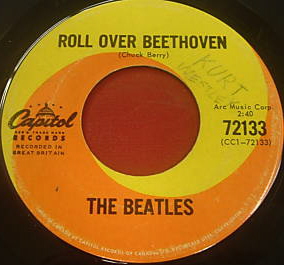 Capitol Records was very anxious to release their follow-up single to the hugely successful "I Want To Hold Your Hand." By February of 1964, they saw many other record labels, such as Vee Jay, Swan, Tollie and MGM, release singles and capitalize on the popularity of the group that they had just acquired exclusive rights to in the US. Their Canadian counterpart "Capitol Of Canada" was charting in America with releases exclusive to that label, one of which, "Roll Over Beethoven," was even being considered for the follow-up single. Capitol Records was very anxious to release their follow-up single to the hugely successful "I Want To Hold Your Hand." By February of 1964, they saw many other record labels, such as Vee Jay, Swan, Tollie and MGM, release singles and capitalize on the popularity of the group that they had just acquired exclusive rights to in the US. Their Canadian counterpart "Capitol Of Canada" was charting in America with releases exclusive to that label, one of which, "Roll Over Beethoven," was even being considered for the follow-up single.
 When news of this hit the ears of producer George Martin, he stepped in to voice his opinion to Capitol Records. He felt that "Roll Over Beethoven" did not represent the present sound of the band. He said this, of course, because he knew what was on the horizon. The Beatles had just recorded what he confidently felt would be a dynamite worldwide smash and he wanted to premier the song as soon as possible in both Britain and America. George told Capitol to wait just a few short weeks for the tapes of two new songs and that it would definitely be worth the wait. The two songs turned out to be "You Can't Do That" and the predetermined rock 'n' roll powerhouse "Can't Buy Me Love." He proved to be right. When news of this hit the ears of producer George Martin, he stepped in to voice his opinion to Capitol Records. He felt that "Roll Over Beethoven" did not represent the present sound of the band. He said this, of course, because he knew what was on the horizon. The Beatles had just recorded what he confidently felt would be a dynamite worldwide smash and he wanted to premier the song as soon as possible in both Britain and America. George told Capitol to wait just a few short weeks for the tapes of two new songs and that it would definitely be worth the wait. The two songs turned out to be "You Can't Do That" and the predetermined rock 'n' roll powerhouse "Can't Buy Me Love." He proved to be right.
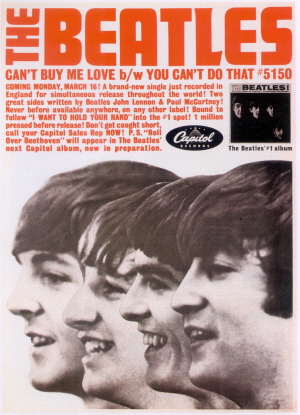 With full-page trade advertisements in Billboard and Cash Box magazines on March 14th, 1964, Capitol let it be known that the latest full-fledged Beatles music could only be purchased on their record label. The single was released two days later on March 16th, 1964, which was two weeks before they originally were going to release it and four days before it was released in Britain. With full-page trade advertisements in Billboard and Cash Box magazines on March 14th, 1964, Capitol let it be known that the latest full-fledged Beatles music could only be purchased on their record label. The single was released two days later on March 16th, 1964, which was two weeks before they originally were going to release it and four days before it was released in Britain.
With US advance orders of 1,700,000 copies, the single actually passed the million mark in sales in America the day after it was released. In fact, the single had an international advance order of 2,100,000 copies.
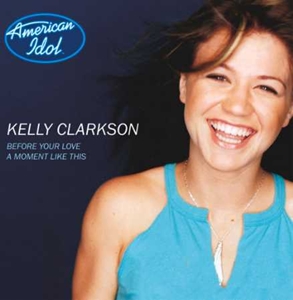 "Can't Buy Me Love" made its initial debut on the American Billboard Hot 100 at #27 on March 28th, 1964, but then jumped directly to the #1 spot the following week. This broke the record for the biggest leap into the top spot on the charts, being that no artist before that time had ever gone directly to #1 from outside the Top 20. This record remained intact for 38 years, being broken in 2002 by American Idol winner Kelly Clarkson with her debut single "A Moment Like This," which leapt from #52 to the top. She then broke the record again in 2009 with her single "My Life Would Suck Without You," which jumped from #97 to the top spot. "Can't Buy Me Love" made its initial debut on the American Billboard Hot 100 at #27 on March 28th, 1964, but then jumped directly to the #1 spot the following week. This broke the record for the biggest leap into the top spot on the charts, being that no artist before that time had ever gone directly to #1 from outside the Top 20. This record remained intact for 38 years, being broken in 2002 by American Idol winner Kelly Clarkson with her debut single "A Moment Like This," which leapt from #52 to the top. She then broke the record again in 2009 with her single "My Life Would Suck Without You," which jumped from #97 to the top spot.
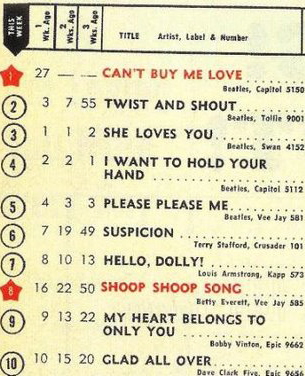 Another chart record broken with "Can't Buy Me Love" was by becoming the third consecutive #1 single by the same artist, following "I Want To Hold Your Hand" and "She Loves You." The dominance of The Beatles on the American pop music charts had reached such a fever pitch by the early months of 1964 that the band broke a further record, this time by holding down the entire top five positions on the pop chart for the week of April 4th, 1964. The chart that week looked like this: Another chart record broken with "Can't Buy Me Love" was by becoming the third consecutive #1 single by the same artist, following "I Want To Hold Your Hand" and "She Loves You." The dominance of The Beatles on the American pop music charts had reached such a fever pitch by the early months of 1964 that the band broke a further record, this time by holding down the entire top five positions on the pop chart for the week of April 4th, 1964. The chart that week looked like this:
-
"Can't Buy Me Love"
-
-
-
-
 The next week on the Billboard Hot 100 (April 11th, 1964), another record was broken during the stay of "Can't Buy Me Love" in the #1 spot. The Beatles occupied a total of 14 positions in the Hot 100 for that week, including b-sides, Canadian imports and singles from other record labels. No artist broke this record for decades, Justin Beiber and Drake being later examples of artists eclipsing 14 positions on the Hot 100 as a result of streaming individual songs from their newly released albums at the time. The next week on the Billboard Hot 100 (April 11th, 1964), another record was broken during the stay of "Can't Buy Me Love" in the #1 spot. The Beatles occupied a total of 14 positions in the Hot 100 for that week, including b-sides, Canadian imports and singles from other record labels. No artist broke this record for decades, Justin Beiber and Drake being later examples of artists eclipsing 14 positions on the Hot 100 as a result of streaming individual songs from their newly released albums at the time.
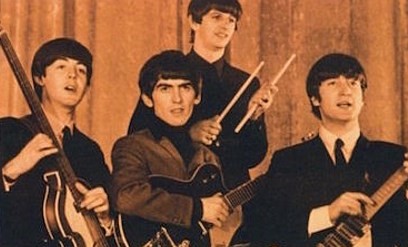 All this being said, the term "groundbreaking" could accurately be used to describe the impact of "Can't Buy Me Love" on the US charts. This term could also accurately be used to describe the song itself, which set the bar quite high for the band's amazing career that, while still in its infancy, was growing by leaps and bounds. All this being said, the term "groundbreaking" could accurately be used to describe the impact of "Can't Buy Me Love" on the US charts. This term could also accurately be used to describe the song itself, which set the bar quite high for the band's amazing career that, while still in its infancy, was growing by leaps and bounds.
Songwriting History
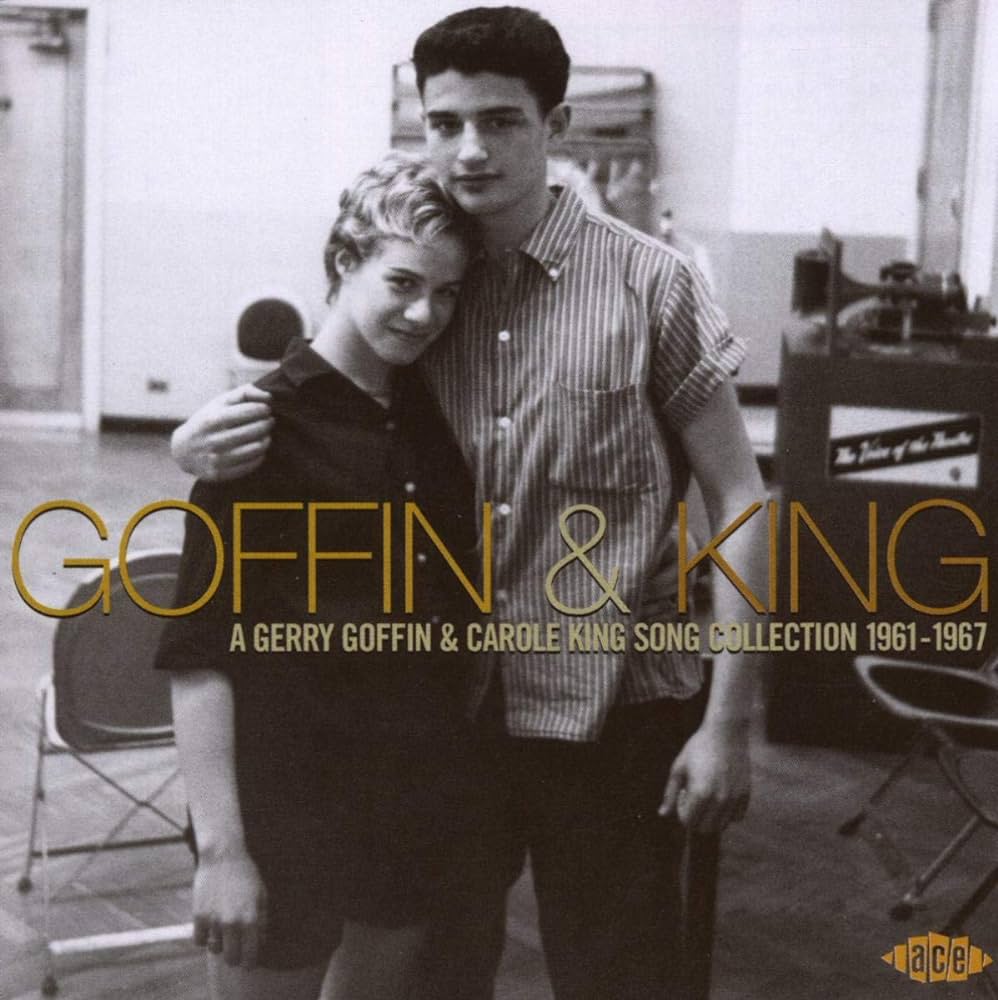 "One thing we always did with records that we bought, aside from checking out the title, was to then check out the names in brackets underneath," McCartney recounts in his book "The Lyrics." "Leiber & Stoller, Goffin & King. These were magical names to us. So, John and I looked at people like those and said, 'Right, we could do that. And if we would get hits, we will get money. It may not buy us love, but it'll buy us a car.'" "One thing we always did with records that we bought, aside from checking out the title, was to then check out the names in brackets underneath," McCartney recounts in his book "The Lyrics." "Leiber & Stoller, Goffin & King. These were magical names to us. So, John and I looked at people like those and said, 'Right, we could do that. And if we would get hits, we will get money. It may not buy us love, but it'll buy us a car.'"
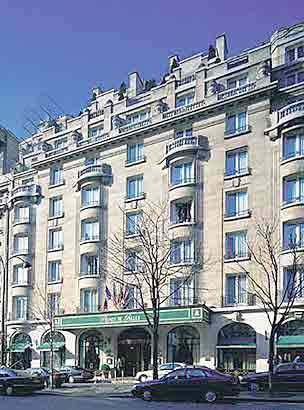 From January 16th through February 4th, 1964, the Beatles performed a marathon concert series at the Olympia Theatre in Paris doing two (and sometimes three) shows a night for eighteen days. While there, they all stayed at the luxurious George V Hotel to recuperate from the hectic performance schedule. "This song was written on a piano in the George V Hotel in Paris," Paul continues. "The hotel was near the Champs-Elysees, and we had suites big enough to have a piano brought up. The idea here was that all these material possessions are well and good, but money can't buy you what you really needed. The irony here is that just before Paris, we had been in Florida where, if not love, money certainly could buy you a lot of what you wanted. But the premise stand, I think. Money can't buy you a happy family or friends you can trust." In the book "Many Years From Now," Paul continues: "'Can't Buy Me Love' is my attempt to write in a bluesy mode. The idea behind it was that all these material possessions are all very well but they won't buy me what I really want. It was a very hooky song." From January 16th through February 4th, 1964, the Beatles performed a marathon concert series at the Olympia Theatre in Paris doing two (and sometimes three) shows a night for eighteen days. While there, they all stayed at the luxurious George V Hotel to recuperate from the hectic performance schedule. "This song was written on a piano in the George V Hotel in Paris," Paul continues. "The hotel was near the Champs-Elysees, and we had suites big enough to have a piano brought up. The idea here was that all these material possessions are well and good, but money can't buy you what you really needed. The irony here is that just before Paris, we had been in Florida where, if not love, money certainly could buy you a lot of what you wanted. But the premise stand, I think. Money can't buy you a happy family or friends you can trust." In the book "Many Years From Now," Paul continues: "'Can't Buy Me Love' is my attempt to write in a bluesy mode. The idea behind it was that all these material possessions are all very well but they won't buy me what I really want. It was a very hooky song."
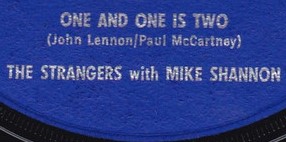 As was the case here, The Beatles made good use of whatever "down time" they had to concentrate on upcoming tasks at hand, which amounted to John and Paul writing songs for their upcoming motion picture that the group were due to begin filming in March, or a month and a half from then. "The song was actually written especially for the soundtrack and the film," Paul affirms in his book "The Lyrics." Also on the immediate agenda was composing the follow-up to their recently released British hit "I Want To Hold Your Hand," which was riding the top of the charts in England and had just been released in America. Also accomplished during their stay at the George V Hotel, Paul wrote the song "One And One Is Two," which was duly given away to a fellow Liverpool group The Strangers and was never recorded by The Beatles. As was the case here, The Beatles made good use of whatever "down time" they had to concentrate on upcoming tasks at hand, which amounted to John and Paul writing songs for their upcoming motion picture that the group were due to begin filming in March, or a month and a half from then. "The song was actually written especially for the soundtrack and the film," Paul affirms in his book "The Lyrics." Also on the immediate agenda was composing the follow-up to their recently released British hit "I Want To Hold Your Hand," which was riding the top of the charts in England and had just been released in America. Also accomplished during their stay at the George V Hotel, Paul wrote the song "One And One Is Two," which was duly given away to a fellow Liverpool group The Strangers and was never recorded by The Beatles.
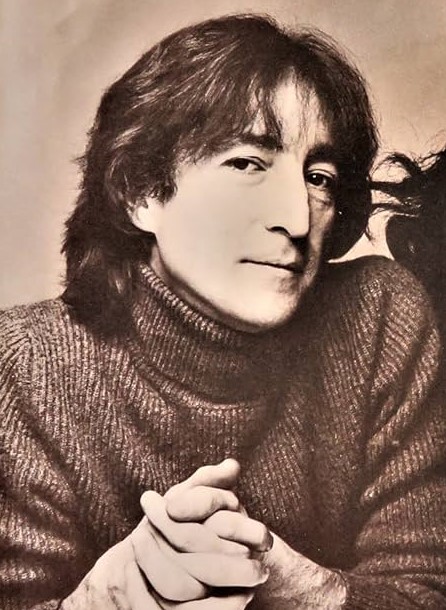 As to Lennon's involvement with the song, John's memory refined itself in time. "John and Paul, but mainly Paul" is what John stated about "Can't Buy Me Love" in 1972, but in 1980 he said "That's Paul completely. Maybe I had something to do with the chorus, but I don't know. I always considered it his song." As to Lennon's involvement with the song, John's memory refined itself in time. "John and Paul, but mainly Paul" is what John stated about "Can't Buy Me Love" in 1972, but in 1980 he said "That's Paul completely. Maybe I had something to do with the chorus, but I don't know. I always considered it his song."
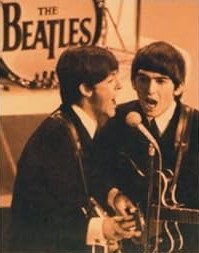 In-between the time the song was written and completed in the studio, the group enjoyed the amazing experience of their first visit to America and taking in the celebrity "high life" of Miami, Florida. Paul McCartney's recollection of the group's Florida experience, detailed above, could very easily have been confused with their stay in Miami later in February of 1964, detailed below, which was after the song was written in Paris. In-between the time the song was written and completed in the studio, the group enjoyed the amazing experience of their first visit to America and taking in the celebrity "high life" of Miami, Florida. Paul McCartney's recollection of the group's Florida experience, detailed above, could very easily have been confused with their stay in Miami later in February of 1964, detailed below, which was after the song was written in Paris.
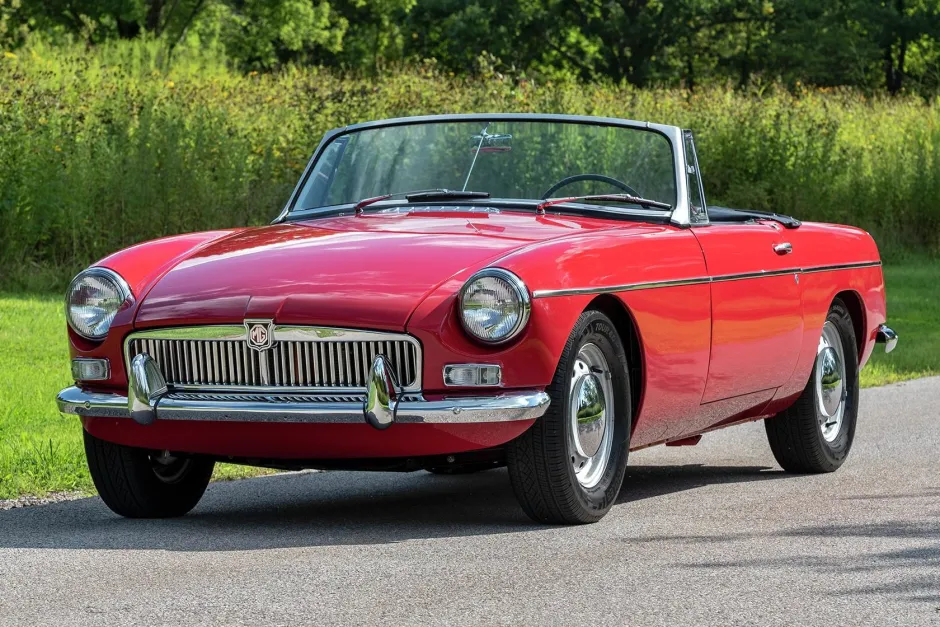 "Miami was so incredible. There were all the lovely, gorgeous tanned girls. We did a photo session down by the beach and immediately asked them out. And MG Motors were trying to sell their convertibles down there, which was a perfect little Florida car, and lent us one each as a publicity thing. I remember meeting this rather nice girl and then taking her out for dinner in this MG in the cool Florida night, palm trees swaying. You kidding? A Liverpool boy with this tanned beauty in my MG going out to dinner. It should have been 'Can Buy Me Love,' actually." "Miami was so incredible. There were all the lovely, gorgeous tanned girls. We did a photo session down by the beach and immediately asked them out. And MG Motors were trying to sell their convertibles down there, which was a perfect little Florida car, and lent us one each as a publicity thing. I remember meeting this rather nice girl and then taking her out for dinner in this MG in the cool Florida night, palm trees swaying. You kidding? A Liverpool boy with this tanned beauty in my MG going out to dinner. It should have been 'Can Buy Me Love,' actually."
 EMI Pathe Marconi Recording Studios, Paris
|
Recording History
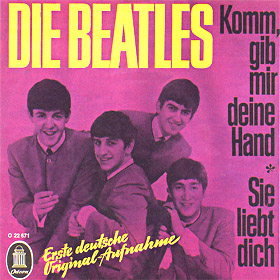 "We recorded it in France, as I recall," Paul remembers. "Went over to the Odeon in Paris and recorded it over there." What McCartney was actually referring to was the EMI Pathe Marconi Studios in Paris where they convened on January 29th, 1964 for the only recording session of their career outside of London. The intention of this late-morning / afternoon session was to record German language versions of two of their previous hit songs, namely "I Want To Hold Your Hand" and "She Loves You." This being accomplished this, they had approximately an hour of studio time left, so they jumped head-long into a song they were more excited about, which was Paul's newly written "Can't Buy Me Love." "We recorded it in France, as I recall," Paul remembers. "Went over to the Odeon in Paris and recorded it over there." What McCartney was actually referring to was the EMI Pathe Marconi Studios in Paris where they convened on January 29th, 1964 for the only recording session of their career outside of London. The intention of this late-morning / afternoon session was to record German language versions of two of their previous hit songs, namely "I Want To Hold Your Hand" and "She Loves You." This being accomplished this, they had approximately an hour of studio time left, so they jumped head-long into a song they were more excited about, which was Paul's newly written "Can't Buy Me Love."
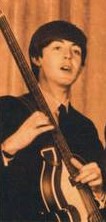 Only four takes of this song were required to get a suitable recording down and ready for overdubs. These fully live performances, with all of them playing their usual instruments along with providing vocals, showed that the band had the arrangement down well, although some adjustments were made along the way. Only four takes of this song were required to get a suitable recording down and ready for overdubs. These fully live performances, with all of them playing their usual instruments along with providing vocals, showed that the band had the arrangement down well, although some adjustments were made along the way.
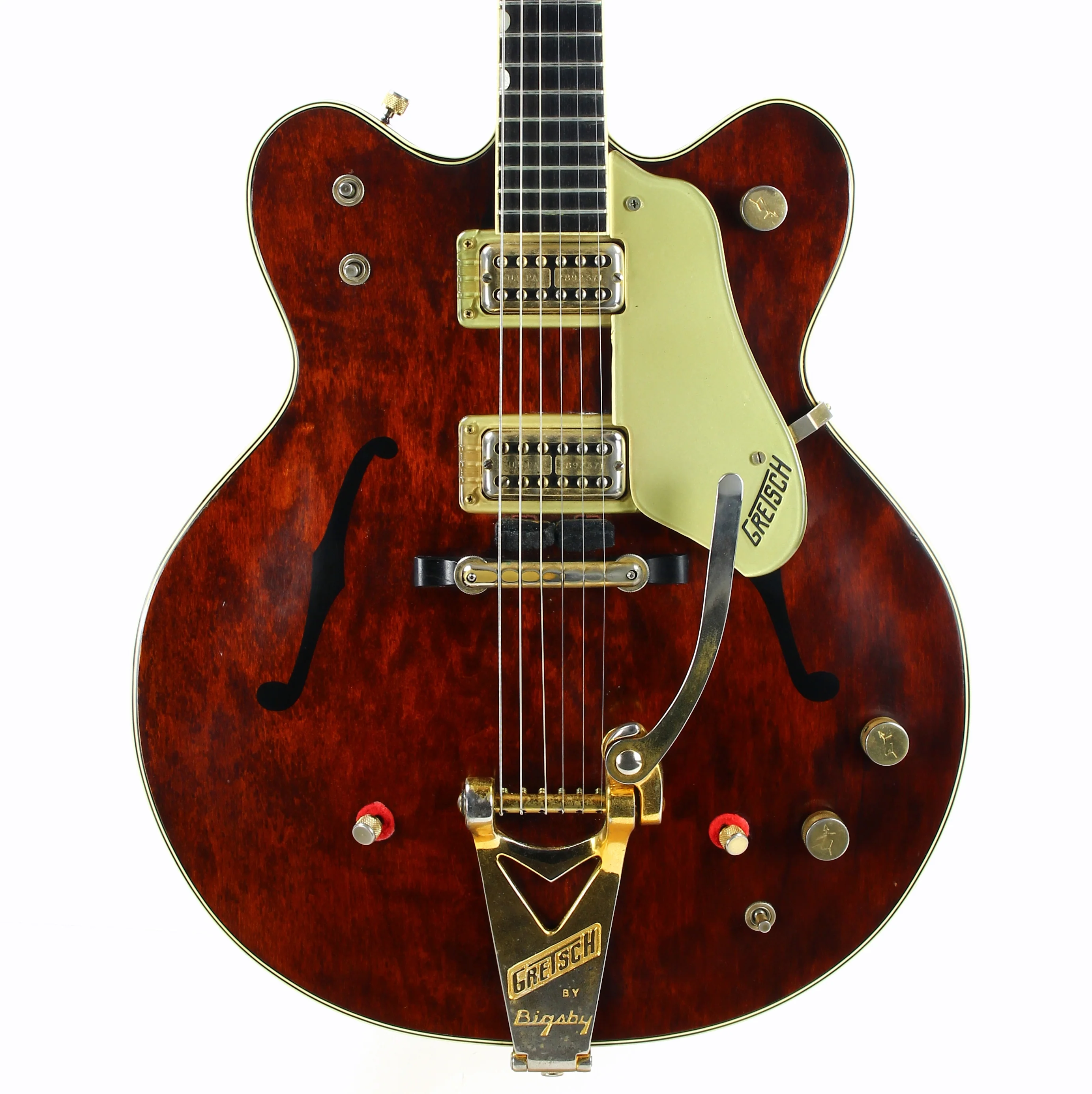 George Martin explained, "I thought that we really needed a tag for the song's ending, and a tag for the beginning, a kind of intro. So I took the first few lines of the chorus (bridge) and changed the ending, and said, 'Let's just have these lines. By altering the end of the second phrase we can get back into the verse pretty quickly.' And they said, 'That's not a bad idea, we'll do it that way.'" George Martin explained, "I thought that we really needed a tag for the song's ending, and a tag for the beginning, a kind of intro. So I took the first few lines of the chorus (bridge) and changed the ending, and said, 'Let's just have these lines. By altering the end of the second phrase we can get back into the verse pretty quickly.' And they said, 'That's not a bad idea, we'll do it that way.'"
A second adjustment made was to scrap the background vocals of Lennon and Harrison where they sang "oooh satisfied," "ooh just can't buy," etc., during the verses. McCartney also sang with a somewhat bluesy vibe, which was toned down in the later takes of the song. The first two takes with the early background vocal arrangement were edited together for release on the 1996 compilation album "Anthology 1," which comprised all of "take two" edited with George Harrison's solo from "take one."
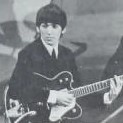 After an incomplete "take three," they make it through the song on "take four," which is the version that was deemed the best. This take did feature a guitar solo from Harrison, but it was viewed as inferior and worthy of overdubbing at a later time. As the Paris recording session time ran out, this master tape was taken by George Martin back to EMI for further work. After an incomplete "take three," they make it through the song on "take four," which is the version that was deemed the best. This take did feature a guitar solo from Harrison, but it was viewed as inferior and worthy of overdubbing at a later time. As the Paris recording session time ran out, this master tape was taken by George Martin back to EMI for further work.
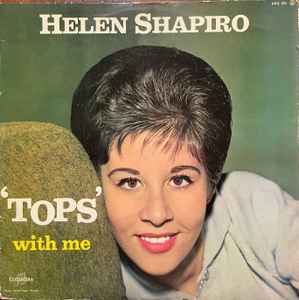 February 25th, 1964 was the next chance the band had for recording, since they spent the majority of February conquering America. They entered EMI Studio Two on this date from 10 am to 1 pm to add overdubs to "Can't Buy Me Love," which would bring the song to its final stage. Paul double-tracked his vocals and, according to Helen Shapiro who was present in the studio at this session, Ringo added more cymbals "over the top" of the previous recording. Then George re-recorded his guitar solo, but there was a slight problem. February 25th, 1964 was the next chance the band had for recording, since they spent the majority of February conquering America. They entered EMI Studio Two on this date from 10 am to 1 pm to add overdubs to "Can't Buy Me Love," which would bring the song to its final stage. Paul double-tracked his vocals and, according to Helen Shapiro who was present in the studio at this session, Ringo added more cymbals "over the top" of the previous recording. Then George re-recorded his guitar solo, but there was a slight problem.
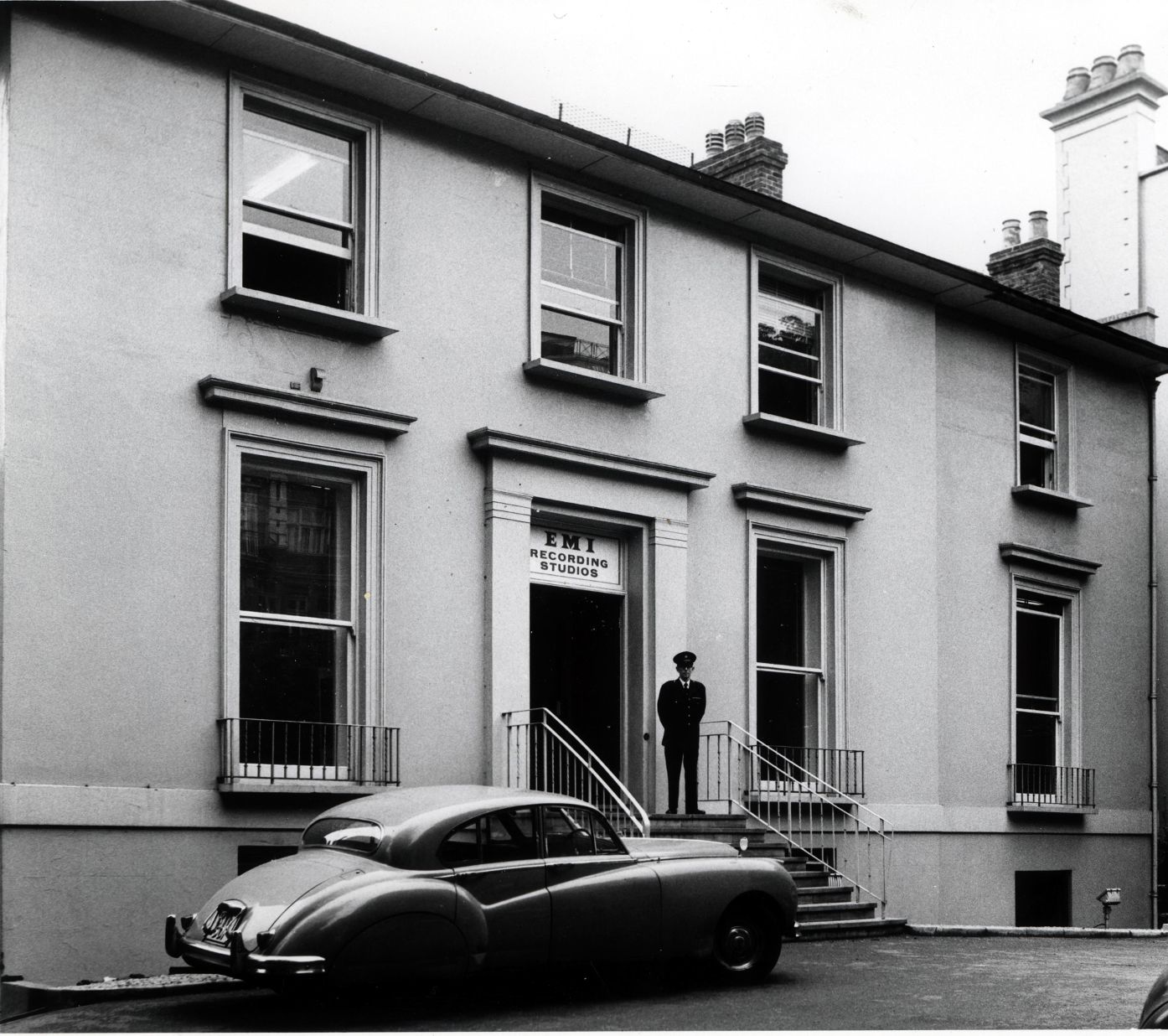 In regards to this song, Harrison explained: "We took the tapes from that back to England to do some work on them. I read something that tries to analyze 'Can't Buy Me Love', talking about the double-track guitar - mine - and saying that it's not very good because you can still hear the original one. What happened was we recorded it first in Paris and later re-recorded it in England. Obviously they'd tried to overdub it but in those days they only had two tracks, so you can hear the version we put on in London, and in the background you can hear a quieter one." In regards to this song, Harrison explained: "We took the tapes from that back to England to do some work on them. I read something that tries to analyze 'Can't Buy Me Love', talking about the double-track guitar - mine - and saying that it's not very good because you can still hear the original one. What happened was we recorded it first in Paris and later re-recorded it in England. Obviously they'd tried to overdub it but in those days they only had two tracks, so you can hear the version we put on in London, and in the background you can hear a quieter one."
These overdubs were completed by approximately 11 am, which left two hours of this morning session for starting and finishing what would become the b-side of their next single, "You Can't Do That."
 Then on the following day, which was February 26th, 1964, George Martin and engineers Norman Smith and Richard Langham used the same three-hour time slot (10 am to 1 pm) to create mono mixes for both sides of their next single. The mono mix of "Can't Buy Me Love" created on this day is the same one released worldwide in 1964. Then on the following day, which was February 26th, 1964, George Martin and engineers Norman Smith and Richard Langham used the same three-hour time slot (10 am to 1 pm) to create mono mixes for both sides of their next single. The mono mix of "Can't Buy Me Love" created on this day is the same one released worldwide in 1964.
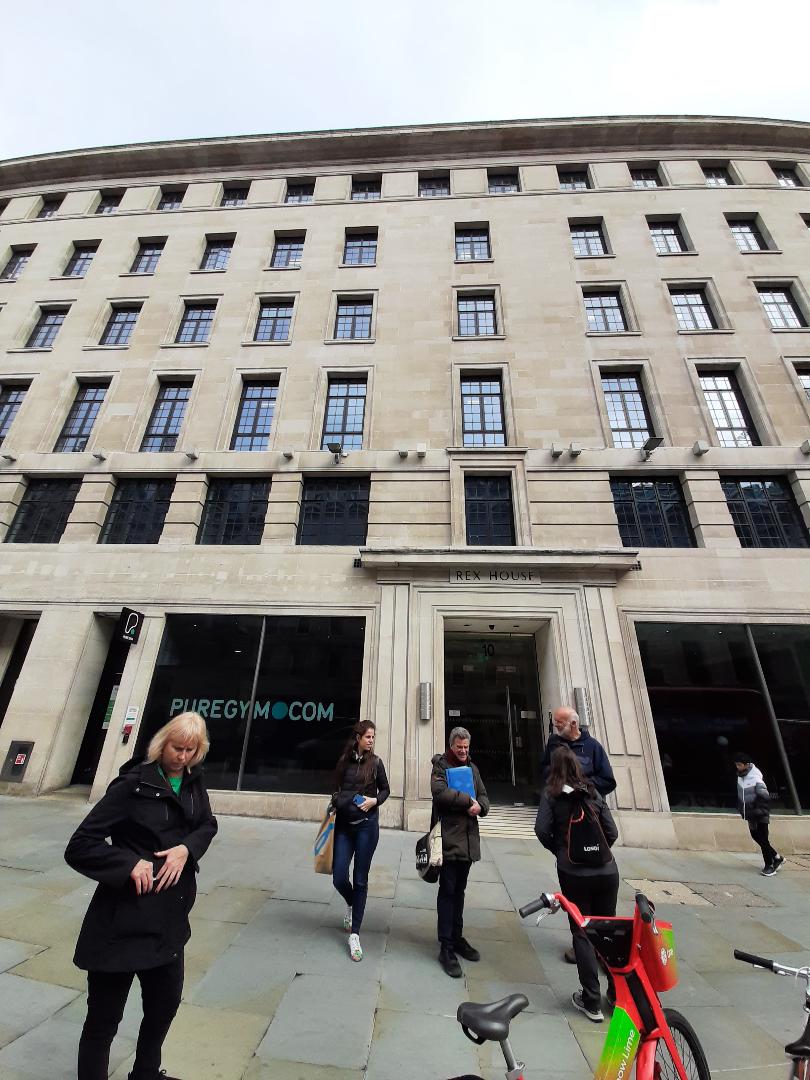 The Beatles wasted no time at all in promoting "Can't Buy Me Love," even well before its release. On February 28th, 1964, two days after the official mono mix mentioned above was made, they recorded the song in Studio One of BBC Piccadilly Studios in London between 6:30 and 9 pm for the second edition of their radio show "From Us To You," which was produced by Bryant Marriott and aired on March 30th, 1964 between 10 am and 12 noon. The Beatles wasted no time at all in promoting "Can't Buy Me Love," even well before its release. On February 28th, 1964, two days after the official mono mix mentioned above was made, they recorded the song in Studio One of BBC Piccadilly Studios in London between 6:30 and 9 pm for the second edition of their radio show "From Us To You," which was produced by Bryant Marriott and aired on March 30th, 1964 between 10 am and 12 noon.
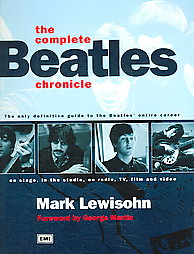 A mixing session was scheduled on March 10th, 1964 in the control room of EMI Studio Two, this session being attended by George Martin and Norman Smith, to create the stereo mix for “Can’t Buy Me Love.” Mark Lewisohn’s 1992 book “The Complete Beatles Chronicle” shares a recent discovery concerning this session: “An interesting document was uncovered at EMI in 1991 suggesting that a 'drummer' participated in this 10 am to 1 pm session with regards to ‘Can’t Buy Me Love’ - which can only mean he did some overdubbing. He was paid a Musician's Union session fee…but his name was not detailed on the document. This answers one question that has long puzzled some Beatles students: why the drumming on this song’s stereo mix differs slightly from the mono mix. But it also raises a new question regarding the drummer’s identity: Ringo’s ‘A Hard Day’s Night’ film shooting schedule would appear to suggest that he had little, if any, opportunity to visit Abbey Road on this day.” A mixing session was scheduled on March 10th, 1964 in the control room of EMI Studio Two, this session being attended by George Martin and Norman Smith, to create the stereo mix for “Can’t Buy Me Love.” Mark Lewisohn’s 1992 book “The Complete Beatles Chronicle” shares a recent discovery concerning this session: “An interesting document was uncovered at EMI in 1991 suggesting that a 'drummer' participated in this 10 am to 1 pm session with regards to ‘Can’t Buy Me Love’ - which can only mean he did some overdubbing. He was paid a Musician's Union session fee…but his name was not detailed on the document. This answers one question that has long puzzled some Beatles students: why the drumming on this song’s stereo mix differs slightly from the mono mix. But it also raises a new question regarding the drummer’s identity: Ringo’s ‘A Hard Day’s Night’ film shooting schedule would appear to suggest that he had little, if any, opportunity to visit Abbey Road on this day.”
 Geoff Emerick’s informative book “Here, There And Everywhere” sheds some newer light that may very well reveal the identity of this mysterious drummer. In regards to the master tape that contains “Can’t Buy Me Love,” Geoff Emerick recalled: “There was a technical problem to be overcome, discovered when the tape was brought back and played at our studios. Perhaps because it had been spooled incorrectly, the tape had a ripple in it, resulting in the tape's intermittent loss of treble on Ringo’s hi-hat cymbal. There was tremendous time pressure to get the track mixed and delivered to the pressing plant, and due to touring commitments the band themselves were unavailable, so George (Martin) and Norman (Smith) took it upon themselves to make a little artistic adjustment.” Geoff Emerick’s informative book “Here, There And Everywhere” sheds some newer light that may very well reveal the identity of this mysterious drummer. In regards to the master tape that contains “Can’t Buy Me Love,” Geoff Emerick recalled: “There was a technical problem to be overcome, discovered when the tape was brought back and played at our studios. Perhaps because it had been spooled incorrectly, the tape had a ripple in it, resulting in the tape's intermittent loss of treble on Ringo’s hi-hat cymbal. There was tremendous time pressure to get the track mixed and delivered to the pressing plant, and due to touring commitments the band themselves were unavailable, so George (Martin) and Norman (Smith) took it upon themselves to make a little artistic adjustment.”
 “As I eagerly moved over into the engineer’s seat for the first time,” Geoff Emerick added, “Norman (Smith) headed down into the studio to overdub a hastily set-up hi-hat onto a few bars of the song while I recorded him, simultaneously doing a two-track to two-track dub. Thanks to Norman (Smith)’s skills as a drummer, the repair was made quickly and seamlessly. I doubt if even The Beatles themselves ever realized that their performance had been surreptitiously augmented.” With a bit of quick thinking and ingenuity, a crisis was averted! “As I eagerly moved over into the engineer’s seat for the first time,” Geoff Emerick added, “Norman (Smith) headed down into the studio to overdub a hastily set-up hi-hat onto a few bars of the song while I recorded him, simultaneously doing a two-track to two-track dub. Thanks to Norman (Smith)’s skills as a drummer, the repair was made quickly and seamlessly. I doubt if even The Beatles themselves ever realized that their performance had been surreptitiously augmented.” With a bit of quick thinking and ingenuity, a crisis was averted!
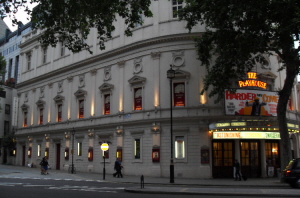 Two more BBC radio recordings were then made of "Can't Buy Me Love" by the band, the first being done on March 31st, 1964 at The Playhouse Theatre in London between 7 and 10:30 pm for the popular radio show "Saturday Club," which was produced by Jimmy Grant and Bernie Andrews and aired on April 4th between 10 am and noon. The next recording of the song was on May 1st, 1964 at BBC Paris Studio in London between 6:30 and 9:30 pm for the third edition of their show "From Us To You," which was produced by Bryant Marriott and broadcast on May 18th between 10 am and 12 noon. Two more BBC radio recordings were then made of "Can't Buy Me Love" by the band, the first being done on March 31st, 1964 at The Playhouse Theatre in London between 7 and 10:30 pm for the popular radio show "Saturday Club," which was produced by Jimmy Grant and Bernie Andrews and aired on April 4th between 10 am and noon. The next recording of the song was on May 1st, 1964 at BBC Paris Studio in London between 6:30 and 9:30 pm for the third edition of their show "From Us To You," which was produced by Bryant Marriott and broadcast on May 18th between 10 am and 12 noon.
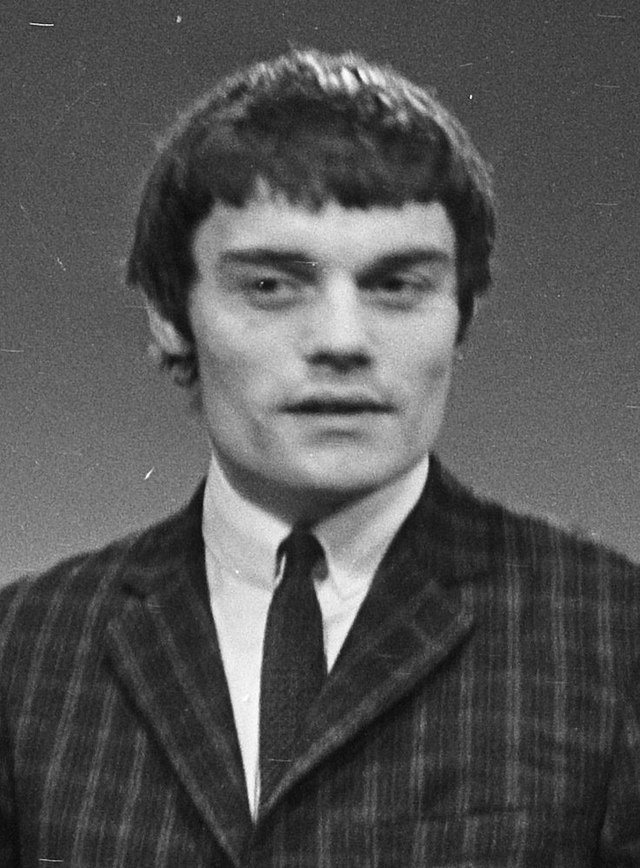 The next time "Can't Buy Me Love" was performed in a studio was not for recording purposes at all. In order to audition a last minute replacement for the ailing Ringo Starr for their world tour, Jimmy Nicol was invited to EMI Studio Two on June 3rd, 1964 to run through six songs, including "Can't Buy Me Love," to see if he could fill the drummer's shoes. After he passed the audition, they all were in Copenhagen the next day. The next time "Can't Buy Me Love" was performed in a studio was not for recording purposes at all. In order to audition a last minute replacement for the ailing Ringo Starr for their world tour, Jimmy Nicol was invited to EMI Studio Two on June 3rd, 1964 to run through six songs, including "Can't Buy Me Love," to see if he could fill the drummer's shoes. After he passed the audition, they all were in Copenhagen the next day.
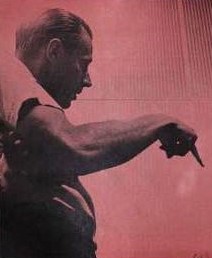 With The Beatles out of the country on tour, George Martin, Norman Smith and 2nd engineer Ken Scott assembled in the control room of EMI Studio Three on June 9th, 1964 to create two identical tapes of the finished songs for the "A Hard Day's Night" soundtrack. All eight of these songs, including "Can't Buy Me Love," were duly dispatched to both American record labels, Capitol and United Artists, for release in the US as they saw fit. With The Beatles out of the country on tour, George Martin, Norman Smith and 2nd engineer Ken Scott assembled in the control room of EMI Studio Three on June 9th, 1964 to create two identical tapes of the finished songs for the "A Hard Day's Night" soundtrack. All eight of these songs, including "Can't Buy Me Love," were duly dispatched to both American record labels, Capitol and United Artists, for release in the US as they saw fit.
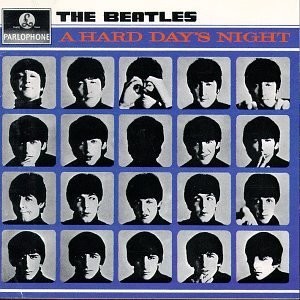 Finally, on June 22nd, 1964, the EMI staff of George Martin, Norman Smith and 2nd engineer Geoff Emerick convened in the control room of Studio One to create stereo mixes of all the songs to appear on the British "A Hard Day's Night" album. This marathon session, running from 10 am to 9 pm, spawned the stereo mix of "Can't Buy Me Love" that was heard all around the world, presumably featuring the overdubbed drumming of engineer Norman Smith. Finally, on June 22nd, 1964, the EMI staff of George Martin, Norman Smith and 2nd engineer Geoff Emerick convened in the control room of Studio One to create stereo mixes of all the songs to appear on the British "A Hard Day's Night" album. This marathon session, running from 10 am to 9 pm, spawned the stereo mix of "Can't Buy Me Love" that was heard all around the world, presumably featuring the overdubbed drumming of engineer Norman Smith.
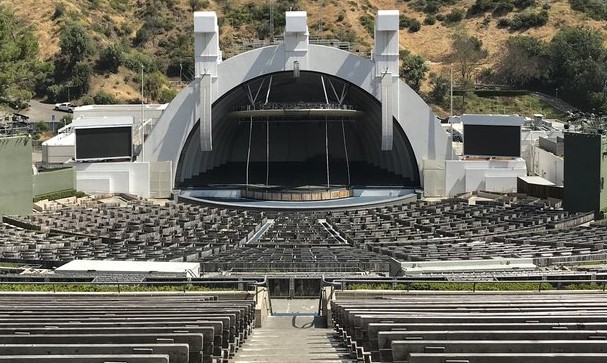 This is not to say that there were no further Beatles recordings of "Can't Buy Me Love." On August 23rd, 1964, they played a concert at the Hollywood Bowl in Los Angeles, California that was recorded on a three-track recording machine for possible release to capitalize on the Christmas market later on that year. The entire performance was produced by Capitol vice-president Voyle Gilmore and George Martin with Hugh Davies engineering. Although this album didn't materialize at that time, the recording of this song was duly mixed on August 27th, 1964, this mix apparently remaining in the vaults somewhere. This is not to say that there were no further Beatles recordings of "Can't Buy Me Love." On August 23rd, 1964, they played a concert at the Hollywood Bowl in Los Angeles, California that was recorded on a three-track recording machine for possible release to capitalize on the Christmas market later on that year. The entire performance was produced by Capitol vice-president Voyle Gilmore and George Martin with Hugh Davies engineering. Although this album didn't materialize at that time, the recording of this song was duly mixed on August 27th, 1964, this mix apparently remaining in the vaults somewhere.
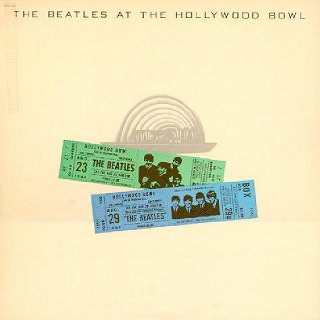 However, on August 29th and 30th, 1965, Capitol Records again attempted to make a proper recording of the band's performances during their return to the Hollywood Bowl. Although the recording made on the first date (produced by Karl Engemann and engineered by Hugh Davies) was not deemed worthy, the one made on the 30th fared much better. This recording, produced by Voyle Gilmore and engineer Pete Abbott, also included "Can't Buy Me Love" and was viewed as suitable enough to eventually be released on the 1977 album "The Beatles At The Hollywood Bowl," after being cleaned up by George Martin and engineer Geoff Emerick at AIR London Studios between January 18th and 23rd, 1977. However, on August 29th and 30th, 1965, Capitol Records again attempted to make a proper recording of the band's performances during their return to the Hollywood Bowl. Although the recording made on the first date (produced by Karl Engemann and engineered by Hugh Davies) was not deemed worthy, the one made on the 30th fared much better. This recording, produced by Voyle Gilmore and engineer Pete Abbott, also included "Can't Buy Me Love" and was viewed as suitable enough to eventually be released on the 1977 album "The Beatles At The Hollywood Bowl," after being cleaned up by George Martin and engineer Geoff Emerick at AIR London Studios between January 18th and 23rd, 1977.
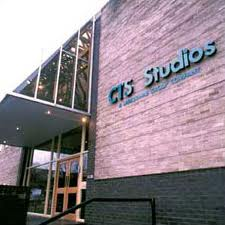 One final recording session was held concerning "Can't Buy Me Love" on January 5th, 1966. Amid some secrecy, The Beatles came to CTS Studios in London to add some touches to their Shea Stadium concert on August 15th, 1965. Paul added a new bass track to the live recording of this song in preperation for the TV film "The Beatles At Shea Stadium." One final recording session was held concerning "Can't Buy Me Love" on January 5th, 1966. Amid some secrecy, The Beatles came to CTS Studios in London to add some touches to their Shea Stadium concert on August 15th, 1965. Paul added a new bass track to the live recording of this song in preperation for the TV film "The Beatles At Shea Stadium."
Sometime during 2015, Giles Martin (son of George Martin) and engineer Sam Okell revisited the original master tape of "Can't Buy Me Love" in Abbey Road Studios to create a new stereo mix of the song, the result appearing on the re-released version of the compilation album "Beatles 1" that came out that year.
 Sometime in 2023, Giles Martin was given the task of creating a "demix remix" of the song "Can't Buy Me Love" for inclusion on the 50th Anniversary edition of the album "The Beatles / 1962 - 1966" (aka "The Red Album"). With Peter Jackson's AI technology at his disposal, Giles Martin was able to utilize this "new machine-learning techology" so that "individual elements that were put to tape...and were therefore impossible to separate" could then be "untangled, allowing Giles (Martin) to put the original recordings back together with even greater clarity and impact," as explained by John Harris in the liner notes of the above mentioned album. The "clarity and impact" is especially witnessed here on "Can't Buy Me Love," the overall sizzle of Ringo's cymbals being a bit more subdued in this mix however. Sometime in 2023, Giles Martin was given the task of creating a "demix remix" of the song "Can't Buy Me Love" for inclusion on the 50th Anniversary edition of the album "The Beatles / 1962 - 1966" (aka "The Red Album"). With Peter Jackson's AI technology at his disposal, Giles Martin was able to utilize this "new machine-learning techology" so that "individual elements that were put to tape...and were therefore impossible to separate" could then be "untangled, allowing Giles (Martin) to put the original recordings back together with even greater clarity and impact," as explained by John Harris in the liner notes of the above mentioned album. The "clarity and impact" is especially witnessed here on "Can't Buy Me Love," the overall sizzle of Ringo's cymbals being a bit more subdued in this mix however.
Song Structure and Style
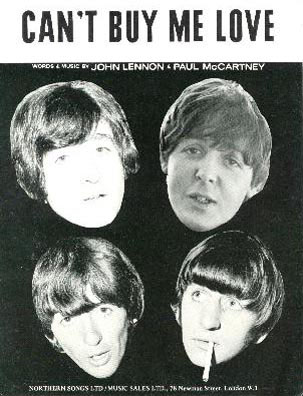 The Beatles songwriting at this point begins to shift its attention towards straight blues progressions. This is not to say that the band hadn't tread on this ground before (even the early composition "One After 909" leaned this way), but their focus in 1964 appeared to veer toward many of their musical heroes' use of the 12-bar blues structure. Mid 1964 saw them release a British EP ("Long Tall Sally") that consisted mostly of covers that used this strict blues format, as well as "You Can't Do That," which appeared now as the b-side of this single. The Beatles songwriting at this point begins to shift its attention towards straight blues progressions. This is not to say that the band hadn't tread on this ground before (even the early composition "One After 909" leaned this way), but their focus in 1964 appeared to veer toward many of their musical heroes' use of the 12-bar blues structure. Mid 1964 saw them release a British EP ("Long Tall Sally") that consisted mostly of covers that used this strict blues format, as well as "You Can't Do That," which appeared now as the b-side of this single.
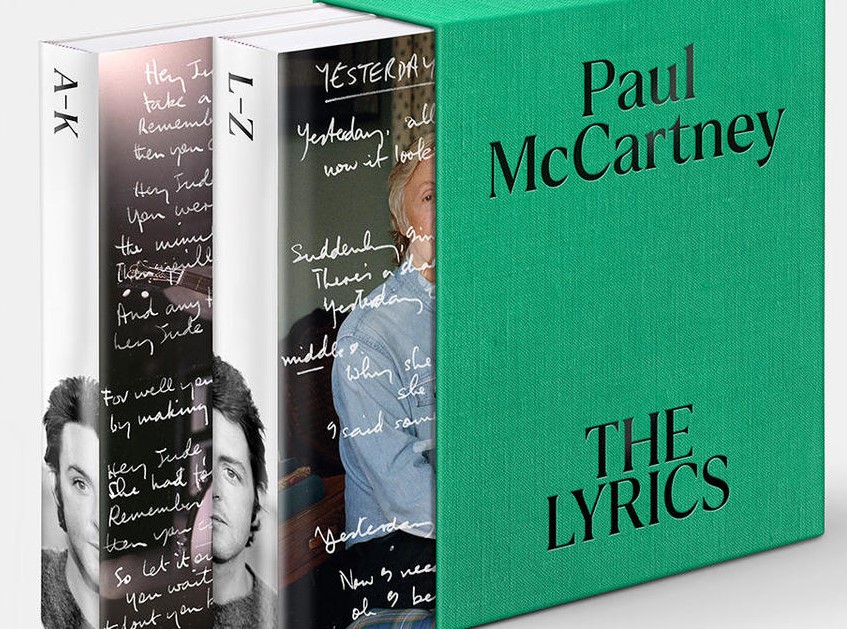 The structure of the song, though, is quite common for the early Beatles period, this consisting of 'verse/ verse/ bridge/ verse' (or aaba) and then repeating a verse as a solo before repeating the bridge and third verse. Coupling this with an introduction and conclusion from an alteration of the bridge (at George Martin's request), what we have is a nicely-rounded, brilliantly-written bouncy rock song. Paul examines the uniqueness of the song's structure in his book "The Lyrics:" "It's twelve-bar blues, with a Beatles twist on the chorus, where we bring in a couple of minor chords. Usually, minor chords are used in the verse of a song, and major chords bring a lift and lighten the mood in the chorus. We did it the other way 'round here." The structure of the song, though, is quite common for the early Beatles period, this consisting of 'verse/ verse/ bridge/ verse' (or aaba) and then repeating a verse as a solo before repeating the bridge and third verse. Coupling this with an introduction and conclusion from an alteration of the bridge (at George Martin's request), what we have is a nicely-rounded, brilliantly-written bouncy rock song. Paul examines the uniqueness of the song's structure in his book "The Lyrics:" "It's twelve-bar blues, with a Beatles twist on the chorus, where we bring in a couple of minor chords. Usually, minor chords are used in the verse of a song, and major chords bring a lift and lighten the mood in the chorus. We did it the other way 'round here."
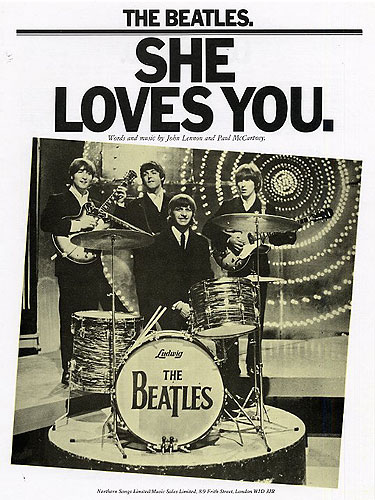 The six-measure intro begins with Paul's vocals appearing three beats before the down-beat of the first measure. The home key of C major is hidden throughout this section of the song just as it had been in many other Beatles' songs before it, such as "She Loves You" and "I Want To Hold Your Hand." Only when the actual first verse begins do we know where home-base is, so to speak. Coincidentally (or maybe purposely) the actual notes of Paul's melody line in the intro outline the triad of the C major home key even before the C chord is played. This accomplishes a palatable transition from the intro to the first verse. The six-measure intro begins with Paul's vocals appearing three beats before the down-beat of the first measure. The home key of C major is hidden throughout this section of the song just as it had been in many other Beatles' songs before it, such as "She Loves You" and "I Want To Hold Your Hand." Only when the actual first verse begins do we know where home-base is, so to speak. Coincidentally (or maybe purposely) the actual notes of Paul's melody line in the intro outline the triad of the C major home key even before the C chord is played. This accomplishes a palatable transition from the intro to the first verse.
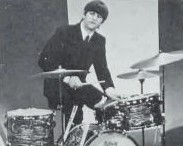 The first verse is welcomed by Ringo's switch from tom-tom fills to his hi-hat sizzles, thus unmistakably distinguishing the first verse from the introduction. The 12-bar blues progression begins at this point, but not without a touch of Beatles thrown in. One such touch being the trademark 'Beatles break' on the tenth measure, just before the words "much for money." Appearing as early as "Love Me Do," this little trick wasn't dropped entirely for years to come. The first verse is welcomed by Ringo's switch from tom-tom fills to his hi-hat sizzles, thus unmistakably distinguishing the first verse from the introduction. The 12-bar blues progression begins at this point, but not without a touch of Beatles thrown in. One such touch being the trademark 'Beatles break' on the tenth measure, just before the words "much for money." Appearing as early as "Love Me Do," this little trick wasn't dropped entirely for years to come.
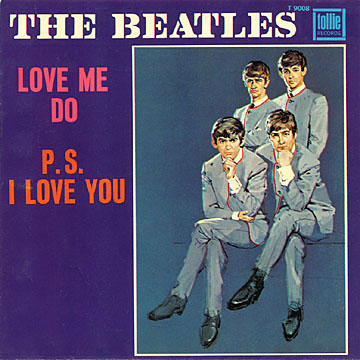 Another similarity heard here, as heard quite universally from The Beatles up to this point, is the title of the song appearing at the end of each verse. This habit, which first appeared even before "Love Me Do," anchors the title as the hook-line, thus indelibly imprinting the catch phrase in our minds. Another similarity heard here, as heard quite universally from The Beatles up to this point, is the title of the song appearing at the end of each verse. This habit, which first appeared even before "Love Me Do," anchors the title as the hook-line, thus indelibly imprinting the catch phrase in our minds.
After a second structurally identical verse, we jump right into an eight-measure bridge that happens to repeat the title of the song twice, leaving many to identify this part of the song as a "refrain" or "chorus." Because of the chord pattern that they used, and the perfect segue it creates back to another verse, once can easily conclude this part as a "bridge."
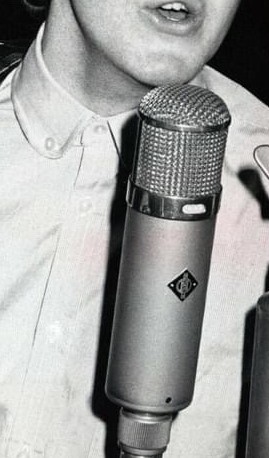 After a third structurally identical verse, we enter into the guitar solo portion of the song, which is played against the same chord structure of the verses. Before this occurs, though, we see that the preceding verse has an additional measure, or 13th measure. The only purpose of this measure appears to be as a suitable transition to the guitar solo (and for Paul to let out an ear-piercing scream). After a third structurally identical verse, we enter into the guitar solo portion of the song, which is played against the same chord structure of the verses. Before this occurs, though, we see that the preceding verse has an additional measure, or 13th measure. The only purpose of this measure appears to be as a suitable transition to the guitar solo (and for Paul to let out an ear-piercing scream).
 Following this appropriately structured guitar solo we are revisited by the bridge and third verse of the song. This third verse now has the appropriate 12-measure length, but is then followed by an 8-measure conclusion, which is basically a repeat of the introduction of the song. The only difference is the return to the home key of C major in the last two measures, which here brings the song to a resolving and satisfying conclusion. Following this appropriately structured guitar solo we are revisited by the bridge and third verse of the song. This third verse now has the appropriate 12-measure length, but is then followed by an 8-measure conclusion, which is basically a repeat of the introduction of the song. The only difference is the return to the home key of C major in the last two measures, which here brings the song to a resolving and satisfying conclusion.
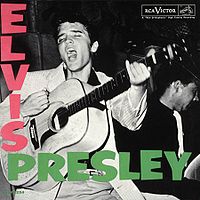 Paul's vocal work is truly the main focal-point and selling-point of the song. His delivery may have changed slightly from a bluesier mode in the earlier takes, but the vibrancy that is heard on the released version creates the unbridled buoyancy needed to catapult The Beatles to the heights of Elvis Presley in the minds of teenagers. Paul's bass work, which he performed simultaneously with the initial vocal track, suitably displays the bounciness of a bluesy-swing style, with quarter note accents throughout. Paul's vocal work is truly the main focal-point and selling-point of the song. His delivery may have changed slightly from a bluesier mode in the earlier takes, but the vibrancy that is heard on the released version creates the unbridled buoyancy needed to catapult The Beatles to the heights of Elvis Presley in the minds of teenagers. Paul's bass work, which he performed simultaneously with the initial vocal track, suitably displays the bounciness of a bluesy-swing style, with quarter note accents throughout.
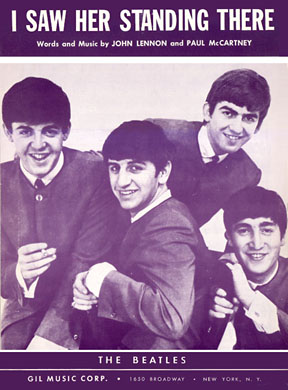 George Harrison's guitar work is next to be commended, especially for it being one of his best early Beatles' guitar solos. It portrays itself as wholly ad-lib because it is not simply a re-run of the melody line of the verse, yet it was truly well-rehearsed, as evidenced by all the available concert versions we can hear today. Whereas the free-form Chuck Berry- or Carl Perkins-like solos we heard earlier from George (as in "I Saw Her Standing There" and "Boys") altered from performance to performance, "Can't Buy Me Love" began a trend of pre-writing the guitar solo for the song. In fact, Paul insisted from this point on that all guitar solos should be pre-arranged, not ad-libbed. The result, in this case, was the first truly memorable guitar solo in the Beatles catalog. George Harrison's guitar work is next to be commended, especially for it being one of his best early Beatles' guitar solos. It portrays itself as wholly ad-lib because it is not simply a re-run of the melody line of the verse, yet it was truly well-rehearsed, as evidenced by all the available concert versions we can hear today. Whereas the free-form Chuck Berry- or Carl Perkins-like solos we heard earlier from George (as in "I Saw Her Standing There" and "Boys") altered from performance to performance, "Can't Buy Me Love" began a trend of pre-writing the guitar solo for the song. In fact, Paul insisted from this point on that all guitar solos should be pre-arranged, not ad-libbed. The result, in this case, was the first truly memorable guitar solo in the Beatles catalog.
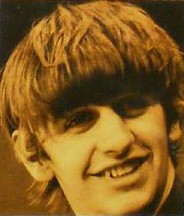 Ringo's work on this track may be perfunctory, but is quite suitable within its context. Ringo shows himself to be quite a master of the swing style on this track, not muddying up the proceedings with extensive drum fills. In fact, when he does perform a drum fill, it's more felt than heard. His compliance with moving to the toms for the introduction and conclusion of the song, this most likely also at the suggestion of George Martin, shows Ringo as wanting what was best for the song, not allowing ego to get in the way. Ringo's work on this track may be perfunctory, but is quite suitable within its context. Ringo shows himself to be quite a master of the swing style on this track, not muddying up the proceedings with extensive drum fills. In fact, when he does perform a drum fill, it's more felt than heard. His compliance with moving to the toms for the introduction and conclusion of the song, this most likely also at the suggestion of George Martin, shows Ringo as wanting what was best for the song, not allowing ego to get in the way.
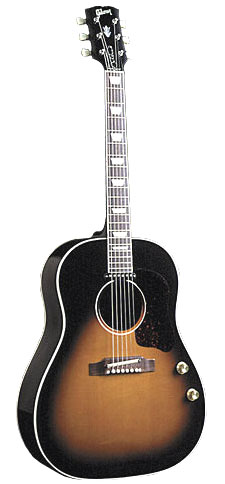 While Lennon took a back seat on this song, just strumming away on his Gibson "Jumbo" acoustic guitar, he definitely added to the fragrance of the song. He felt strongly about it as well, not at all an outsider. He stated in interview in 1964 that "Can't Buy Me Love" was among his favorites on the movie soundtrack. While Lennon took a back seat on this song, just strumming away on his Gibson "Jumbo" acoustic guitar, he definitely added to the fragrance of the song. He felt strongly about it as well, not at all an outsider. He stated in interview in 1964 that "Can't Buy Me Love" was among his favorites on the movie soundtrack.
The song's lyrics are quite self-explanatory and are universal, combining two elements everybody can relate to: money and love. In this case, love wins out, which is the opposite from the lyrics found in their song "Money (That's What I Want)" from the previous year.
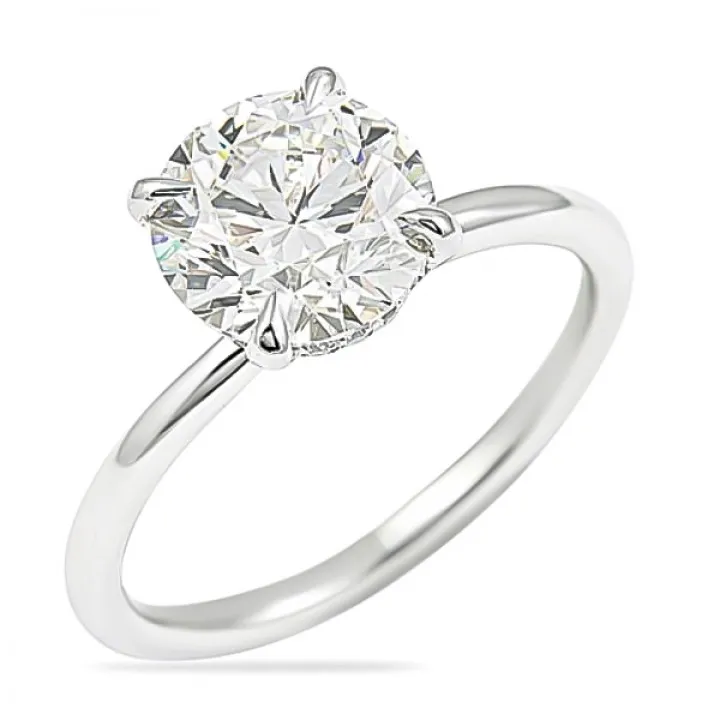 Paul insinuates that material things are more important to the weaker sex when it comes to expressing devotion. While he doesn't "care too much for money," he's willing to capitulate for the sake of pleasing his "friend." What he would really want, though, is for his girl not to "need no diamond rings," but rather for her to "want the kind of things that money just can't buy." This may be a little bit easier on his wallet, but his sincerity shines through convincingly that his view of materialism is deeply rooted. Paul insinuates that material things are more important to the weaker sex when it comes to expressing devotion. While he doesn't "care too much for money," he's willing to capitulate for the sake of pleasing his "friend." What he would really want, though, is for his girl not to "need no diamond rings," but rather for her to "want the kind of things that money just can't buy." This may be a little bit easier on his wallet, but his sincerity shines through convincingly that his view of materialism is deeply rooted.
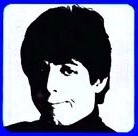 Although the odd use of the word "me" in the title has never been clearly explained, we can only deduce that it was yet another example of Lennon and McCartney including personal pronouns in their hit song titles. "It's the sort of thing that helps the listeners to identify with the lyrics," Lennon explained. "The fans like to feel that they are part of something that is being done by the performers." Although the odd use of the word "me" in the title has never been clearly explained, we can only deduce that it was yet another example of Lennon and McCartney including personal pronouns in their hit song titles. "It's the sort of thing that helps the listeners to identify with the lyrics," Lennon explained. "The fans like to feel that they are part of something that is being done by the performers."
But was there any deeper meaning intended in the lyrics? "Personally, I think you can put any interpretation you want on anything," Paul explained, "but when someone suggests that 'Can't Buy Me Love' is about a prostitute, I draw the line. That's going too far."
American Releases
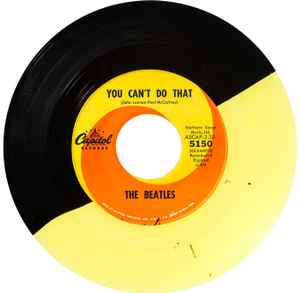 March 16th, 1964 saw the release of "Can't Buy Me Love" in America as the second Capitol single with "You Can't Do That" on the b-side. It raced to #1 on the US Billboard Hot 100 in its second week, replacing "She Loves You" at the top spot, which had replaced "I Want To Hold Your Hand" in the #1 position before that. Since US sales of the "Can't Buy Me Love" single had passed the million mark only one day after it was released, Capitol asked three other pressing plants (RCA, Savoy and Decca) for help in printing further copies to satisfy further demands. The single spent five weeks at #1 in America. Interestingly, the Savoy plant pressed a few unauthorized copies of this single on yellow and black vinyl, as well as just yellow vinyl, as souvenirs. To say that these copies are extremely rare and valuable is no doubt an understatement. March 16th, 1964 saw the release of "Can't Buy Me Love" in America as the second Capitol single with "You Can't Do That" on the b-side. It raced to #1 on the US Billboard Hot 100 in its second week, replacing "She Loves You" at the top spot, which had replaced "I Want To Hold Your Hand" in the #1 position before that. Since US sales of the "Can't Buy Me Love" single had passed the million mark only one day after it was released, Capitol asked three other pressing plants (RCA, Savoy and Decca) for help in printing further copies to satisfy further demands. The single spent five weeks at #1 in America. Interestingly, the Savoy plant pressed a few unauthorized copies of this single on yellow and black vinyl, as well as just yellow vinyl, as souvenirs. To say that these copies are extremely rare and valuable is no doubt an understatement.
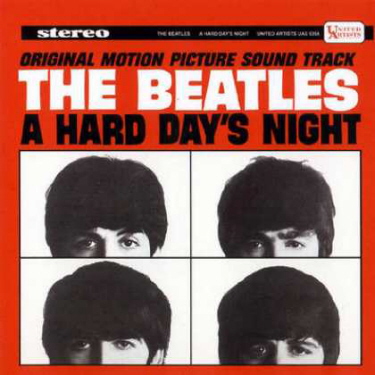 The success of the single meant that the US market was well aware of the song by the time that United Artists rush-released their soundtrack album for their movie "A Hard Day's Night" on June 26th, 1964 using only the mono masters that EMI had sent them around June 10th, 1964. They used this mono mix to create the "High Fiedelty Stereo" mix for the label's stereo release of the album by transferring it to two seperate channels and raising the bass frequencies on one channel and boosting the treble frequencies on the other, raising the volume on the lyric "much for money" to the right channel to help create a stereo effect. The success of the single meant that the US market was well aware of the song by the time that United Artists rush-released their soundtrack album for their movie "A Hard Day's Night" on June 26th, 1964 using only the mono masters that EMI had sent them around June 10th, 1964. They used this mono mix to create the "High Fiedelty Stereo" mix for the label's stereo release of the album by transferring it to two seperate channels and raising the bass frequencies on one channel and boosting the treble frequencies on the other, raising the volume on the lyric "much for money" to the right channel to help create a stereo effect.
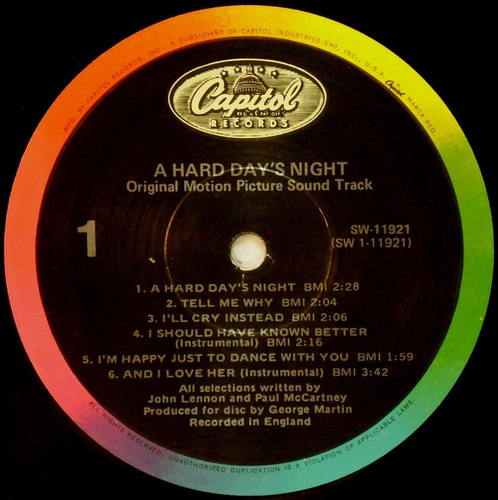 This album, which featured the song as the final Beatles track on side two, rushed to #1 on the US Billboard album charts and stayed there for an amazing fourteen weeks, making this one of the fastest selling albums in the history of the record business as of that time. United Artists kept this album in print until the label was purchased by Capitol Records in 1978, Capitol beginning their reprints of this soundtrack album on August 1st, 1980. This album got its compact disc release on January 21st, 2014, both the mono and stereo versions of the LP appearing on a single CD. This album, which featured the song as the final Beatles track on side two, rushed to #1 on the US Billboard album charts and stayed there for an amazing fourteen weeks, making this one of the fastest selling albums in the history of the record business as of that time. United Artists kept this album in print until the label was purchased by Capitol Records in 1978, Capitol beginning their reprints of this soundtrack album on August 1st, 1980. This album got its compact disc release on January 21st, 2014, both the mono and stereo versions of the LP appearing on a single CD.
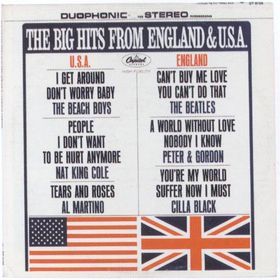 The great success of the United Artists soundtrack album influenced Capitol to delete "Can't Buy Me Love" from their "Something New" album. This is not to say that the label didn't release the song on an LP in 1964. On August 10th, 1964, Capitol released an album to capitalize on the success of British acts they had in their stable entitled "The Big Hits From England & USA." This LP may not have sold very well, but it stands as the only Capitol album release of the song until 1970. The great success of the United Artists soundtrack album influenced Capitol to delete "Can't Buy Me Love" from their "Something New" album. This is not to say that the label didn't release the song on an LP in 1964. On August 10th, 1964, Capitol released an album to capitalize on the success of British acts they had in their stable entitled "The Big Hits From England & USA." This LP may not have sold very well, but it stands as the only Capitol album release of the song until 1970.
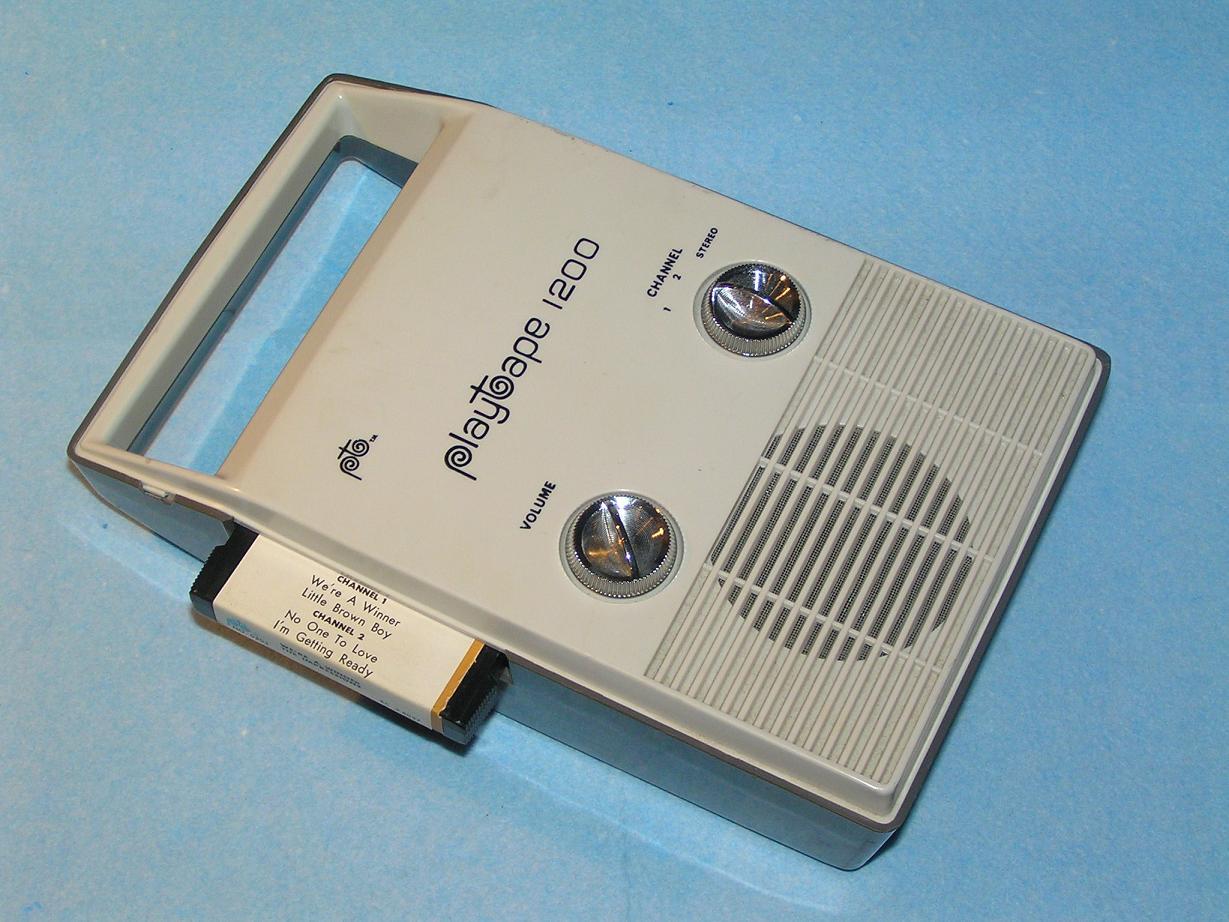 Sometime during 1967, United Artists released a unique version of the soundtrack album for "A Hard Day's Night" on a brand new but short-lived format called "Playtapes." These tapes did not have the capability to include entire LPs, so an eight-song version of the album was released in this portable format, "Can't Buy Me Love" being one of these songs. These "Playtapes" are very difficult to find and have become highly collectable. Sometime during 1967, United Artists released a unique version of the soundtrack album for "A Hard Day's Night" on a brand new but short-lived format called "Playtapes." These tapes did not have the capability to include entire LPs, so an eight-song version of the album was released in this portable format, "Can't Buy Me Love" being one of these songs. These "Playtapes" are very difficult to find and have become highly collectable.
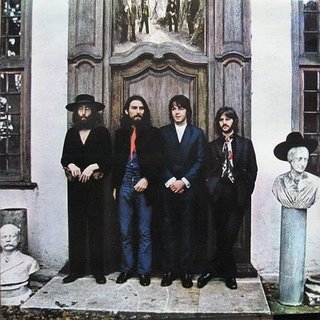 On February 26th, 1970, "Can't Buy Me Love" was included on a very successful Capitol distributed LP. The first pressings of this album contained the name "Hey Jude" on the spine of its cover, while the label bore the title "The Beatles Again." Future pressings replaced the album label title with "Hey Jude," since "The Beatles Again" was the original title that was dropped at the last minute but not in time to escape the first pressing. On February 26th, 1970, "Can't Buy Me Love" was included on a very successful Capitol distributed LP. The first pressings of this album contained the name "Hey Jude" on the spine of its cover, while the label bore the title "The Beatles Again." Future pressings replaced the album label title with "Hey Jude," since "The Beatles Again" was the original title that was dropped at the last minute but not in time to escape the first pressing.
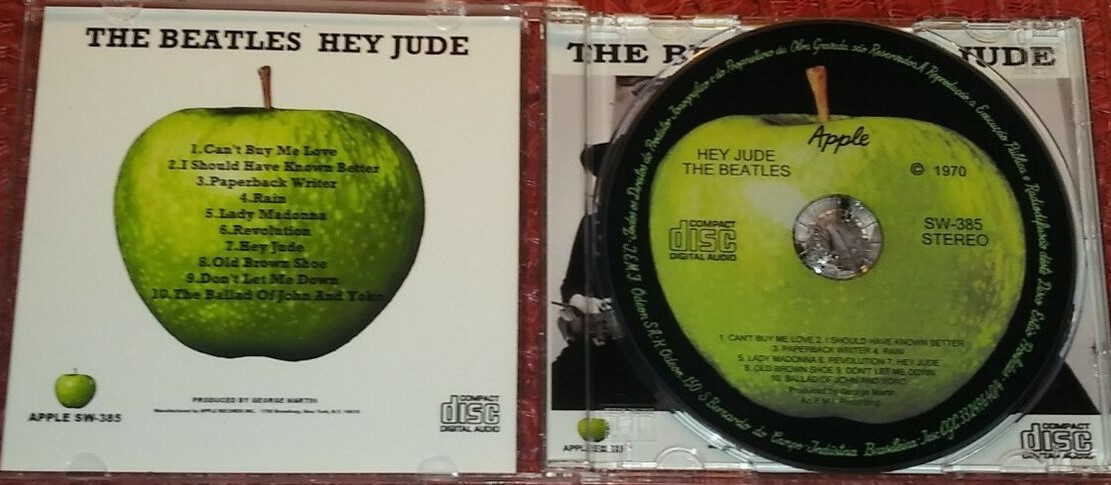 This album was put together especially for the American market and featured songs that were previously on singles but were never included on any Capitol Beatles LP. It was mistakenly thought that "Can't Buy Me Love" never made it onto a Capitol album as it had on the above detailed "The Big Hits From England & USA" album on August 10th, 1964, so it showed up here as the opening track. The "Hey Jude" album sold quite well, peaking at #2 on the Billboard album chart for four straight weeks. The stereo mix of the song that was made on June 22nd, 1964 was included on this album, which was the first time the US heard the stereo version. This album received a compact disc release on January 21st, 2014. This album was put together especially for the American market and featured songs that were previously on singles but were never included on any Capitol Beatles LP. It was mistakenly thought that "Can't Buy Me Love" never made it onto a Capitol album as it had on the above detailed "The Big Hits From England & USA" album on August 10th, 1964, so it showed up here as the opening track. The "Hey Jude" album sold quite well, peaking at #2 on the Billboard album chart for four straight weeks. The stereo mix of the song that was made on June 22nd, 1964 was included on this album, which was the first time the US heard the stereo version. This album received a compact disc release on January 21st, 2014.
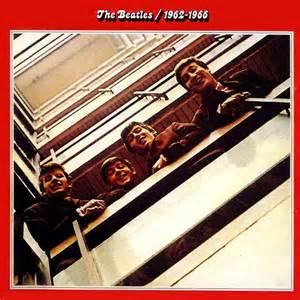 April 2nd, 1973, saw the first release of any legitimate Beatles "greatest hits" package in America. The first of two double-compilation sets released on this day, "The Beatles/1962-1966" (aka "The Red Album") featured the stereo mix of "Can't Buy Me Love" as the last song on side one. This set was certified gold two days before its release and peaked at #3 on the US Billboard album chart. The album was first released on CD in 1993 and then re-released in a remastered form on October 19th, 2010, the stereo mix of the song always being used. April 2nd, 1973, saw the first release of any legitimate Beatles "greatest hits" package in America. The first of two double-compilation sets released on this day, "The Beatles/1962-1966" (aka "The Red Album") featured the stereo mix of "Can't Buy Me Love" as the last song on side one. This set was certified gold two days before its release and peaked at #3 on the US Billboard album chart. The album was first released on CD in 1993 and then re-released in a remastered form on October 19th, 2010, the stereo mix of the song always being used.
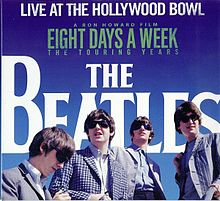 May 4th, 1977 was when the Hollywood Bowl tapes were finally released by Capitol Records. "The Beatles At The Hollywood Bowl" featured the rendition of "Can't Buy Me Love" The Beatles performed on August 30th, 1965 at the Los Angeles venue. This album also became a tremendous success, peaking at #2 on the Billboard album chart. The album was eventually remastered by Giles Martin and re-released under the new title "Live At The Hollywood Bowl" on September 9th, 2016. May 4th, 1977 was when the Hollywood Bowl tapes were finally released by Capitol Records. "The Beatles At The Hollywood Bowl" featured the rendition of "Can't Buy Me Love" The Beatles performed on August 30th, 1965 at the Los Angeles venue. This album also became a tremendous success, peaking at #2 on the Billboard album chart. The album was eventually remastered by Giles Martin and re-released under the new title "Live At The Hollywood Bowl" on September 9th, 2016.
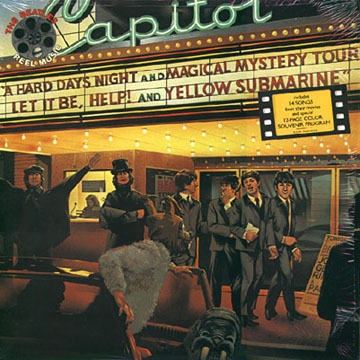 The '80s had its share of new releases of the song as well. "Reel Music" was a Capitol compilation LP released on March 22nd, 1982 to commemorate popular Beatles' film songs. "Can't Buy Me Love" wound up being positioned as the third track on the album, which peaked at #19 on the Billboard album chart. Over 12,000 promo copies of the album were also printed, these being on translucent gold vinyl. The '80s had its share of new releases of the song as well. "Reel Music" was a Capitol compilation LP released on March 22nd, 1982 to commemorate popular Beatles' film songs. "Can't Buy Me Love" wound up being positioned as the third track on the album, which peaked at #19 on the Billboard album chart. Over 12,000 promo copies of the album were also printed, these being on translucent gold vinyl.
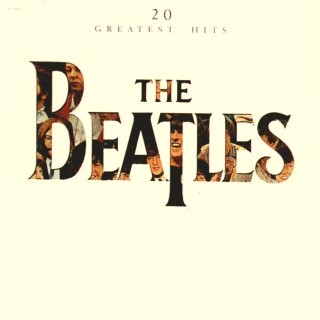 Later that same year, on October 11th, Capitol put together a single-disc compilation album entitled "20 Greatest Hits" which spanned The Beatles' whole career. With "Can't Buy Me Love" as the fourth track of the US version, the album didn't fare quite as well, peaking only at #50 on the Billboard album chart. Later that same year, on October 11th, Capitol put together a single-disc compilation album entitled "20 Greatest Hits" which spanned The Beatles' whole career. With "Can't Buy Me Love" as the fourth track of the US version, the album didn't fare quite as well, peaking only at #50 on the Billboard album chart.
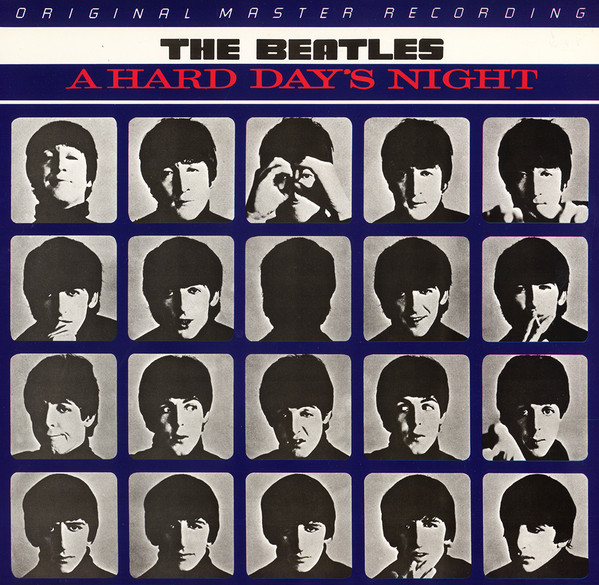 The first time that the original British "A Hard Day's Night" album was made available in America was on the "Original Master Recording" vinyl edition released through Mobile Fidelity Sound Lab in February of 1987. This album included "Can't Buy Me Love" and was prepared utilizing half-speed mastering technology from the original master tape on loan from EMI. This version of the album was only available for a short time and is quite collectible today. The first time that the original British "A Hard Day's Night" album was made available in America was on the "Original Master Recording" vinyl edition released through Mobile Fidelity Sound Lab in February of 1987. This album included "Can't Buy Me Love" and was prepared utilizing half-speed mastering technology from the original master tape on loan from EMI. This version of the album was only available for a short time and is quite collectible today.
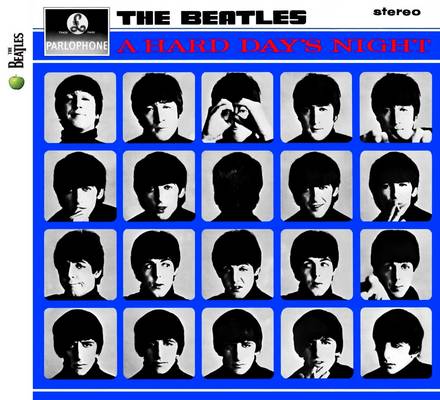 The British version of the "A Hard Day's Night" album was finally released in the US in the compact disc format on February 26th, 1987, a vinyl edition being released on July 21st, 1987. This was a mono release only, but the stereo remastered edition came out on CD on September 9th, 2009, the vinyl version being released on November 13th, 2012. The British version of the "A Hard Day's Night" album was finally released in the US in the compact disc format on February 26th, 1987, a vinyl edition being released on July 21st, 1987. This was a mono release only, but the stereo remastered edition came out on CD on September 9th, 2009, the vinyl version being released on November 13th, 2012.
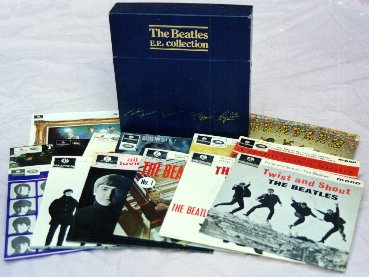 On June 30th, 1992, Capitol released a box set titled "Compact Disc EP Collection," which featured "Can't Buy Me Love" due to its inclusion on the original British EP "The Beatles' Million Sellers." On June 30th, 1992, Capitol released a box set titled "Compact Disc EP Collection," which featured "Can't Buy Me Love" due to its inclusion on the original British EP "The Beatles' Million Sellers."
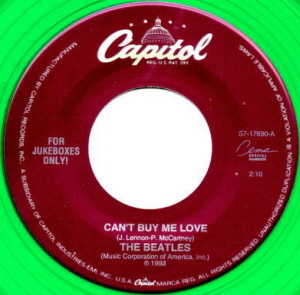 While the original Capitol single remained in print for decades, in February of 1994 a unique printing of this single occurred. The Cema series "For Jukeboxes Only" printed the single on green vinyl, which is also quite the collectors' item today. While the original Capitol single remained in print for decades, in February of 1994 a unique printing of this single occurred. The Cema series "For Jukeboxes Only" printed the single on green vinyl, which is also quite the collectors' item today.
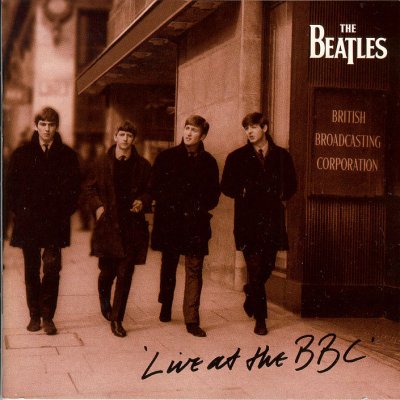 On December 6th, 1994, "Live At The BBC" was released, which was a compilation of many Beatles songs they recorded especially for British radio in the early '60s. Although the highlight of the album was the plethora of songs never before commercially recorded by the band, an unfamiliar alternate version of "Can't Buy Me Love" was included here as well. The version on this album was recorded on February 28th, 1964 for the British radio show "From Us To You," which aired on March 30th of the same year. The album did quite well, peaking at #3 on the US Billboard album chart. A remastered and re-packaged version of this album was released on November 11th, 2013. On December 6th, 1994, "Live At The BBC" was released, which was a compilation of many Beatles songs they recorded especially for British radio in the early '60s. Although the highlight of the album was the plethora of songs never before commercially recorded by the band, an unfamiliar alternate version of "Can't Buy Me Love" was included here as well. The version on this album was recorded on February 28th, 1964 for the British radio show "From Us To You," which aired on March 30th of the same year. The album did quite well, peaking at #3 on the US Billboard album chart. A remastered and re-packaged version of this album was released on November 11th, 2013.
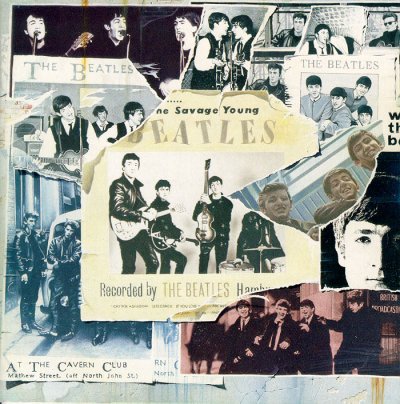 The highly anticipated "Anthology 1" compilation set hit the stores on November 21st, 1995 featuring "take two" of "Can't Buy Me Love" from the original session in Paris on January 29th, 1964. This recording contains the original background vocals by John and George as well as the ad-libbed guitar solo section edited in from "take one." This fascinating look at the making of a popular smash hit was a highlight of the collection, which stayed at #1 for three weeks straight on the Billboard album chart. It sold over a million units the first week. The highly anticipated "Anthology 1" compilation set hit the stores on November 21st, 1995 featuring "take two" of "Can't Buy Me Love" from the original session in Paris on January 29th, 1964. This recording contains the original background vocals by John and George as well as the ad-libbed guitar solo section edited in from "take one." This fascinating look at the making of a popular smash hit was a highlight of the collection, which stayed at #1 for three weeks straight on the Billboard album chart. It sold over a million units the first week.
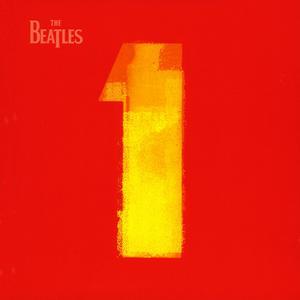 Understandably, "Can't Buy Me Love" was also included on The Beatles' most successful album "Beatles 1," which was released on November 14th, 2000. The album debuted in the #1 spot on the Billboard album chart and, after a brief two week interruption, hit the top spot again for an additional six weeks. It was estimated to have sold eight million copies by the end of 2001 and well over 23 million copies worldwide in its first two months. A remastered version of this album was released in September of 2011 and a newly mixed version was released on November 6th, 2015. Understandably, "Can't Buy Me Love" was also included on The Beatles' most successful album "Beatles 1," which was released on November 14th, 2000. The album debuted in the #1 spot on the Billboard album chart and, after a brief two week interruption, hit the top spot again for an additional six weeks. It was estimated to have sold eight million copies by the end of 2001 and well over 23 million copies worldwide in its first two months. A remastered version of this album was released in September of 2011 and a newly mixed version was released on November 6th, 2015.
On September 9th, 2009, the CD box set "The Beatles In Mono" was released which features a pristine remastered version of the mono mix, the vinyl edition of this box set coming out on September 9th, 2014.
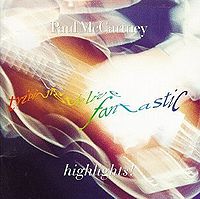 "Can't Buy Me Love" has also been a feature on some of Paul's Live albums throughout the years, such as "Tripping The Live Fantastic (released November 5th, 1990), "Tripping The Live Fantastic: Highlights!" (released November 12th, 1990) and "Back In The US" (released November 11th, 2002). "Can't Buy Me Love" has also been a feature on some of Paul's Live albums throughout the years, such as "Tripping The Live Fantastic (released November 5th, 1990), "Tripping The Live Fantastic: Highlights!" (released November 12th, 1990) and "Back In The US" (released November 11th, 2002).
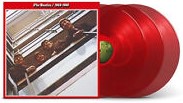 A new 50th Anniversay edition of the compilation album "The Beatles / 1962 - 1966" (aka "The Red Album") was released on November 10th, 2023, the latest stereo mix of "Can't Buy Me Love," as detailed above, being included here. This newly expanded release included 12 additional songs for a total of 38 tracks, and was made available as a double CD and as a triple vinyl release on both black and red vinyl. A new 50th Anniversay edition of the compilation album "The Beatles / 1962 - 1966" (aka "The Red Album") was released on November 10th, 2023, the latest stereo mix of "Can't Buy Me Love," as detailed above, being included here. This newly expanded release included 12 additional songs for a total of 38 tracks, and was made available as a double CD and as a triple vinyl release on both black and red vinyl.
Live Performances
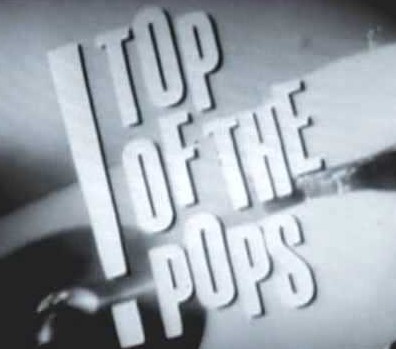 "Can't Buy Me Love" had a very extensive performance life, beginning with a BBC radio broadcast (as detailed above under "Recording History") that occurred only three days after the EMI studio recording of the song was completed. Their first appearance on the hit British television show "Top Of The Pops" featured the band performing the song as well, which was broadcast on March 25th and April 8th, 1964. They also appeared live on the British "Ready, Steady Go!" television show on March 20th of that year miming "Can't Buy Me Love." The British television special "Around The Beatles" also included this song, which the band recorded a version of especially for lip-syncing to on April 19th, 1964, while the actual show was first broadcast on April 28th of that year. "Can't Buy Me Love" had a very extensive performance life, beginning with a BBC radio broadcast (as detailed above under "Recording History") that occurred only three days after the EMI studio recording of the song was completed. Their first appearance on the hit British television show "Top Of The Pops" featured the band performing the song as well, which was broadcast on March 25th and April 8th, 1964. They also appeared live on the British "Ready, Steady Go!" television show on March 20th of that year miming "Can't Buy Me Love." The British television special "Around The Beatles" also included this song, which the band recorded a version of especially for lip-syncing to on April 19th, 1964, while the actual show was first broadcast on April 28th of that year.
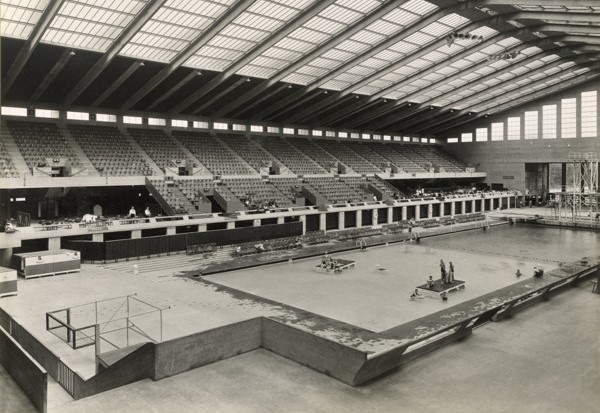 As far as actual concerts were concerned, The Beatles premiered "Can't Buy Me Love" at the "New Musical Express 63-64 Annual Poll-Winners' All-Star Concert" on April 26th at the Empire Pool in Wembley, which was shown on the British ABC Television show "Big Beat '64" on May 10th and November 8th, 1964. May 31st of that year saw the band back at the Prince Of Wales Theatre in London performing the song as well. As far as actual concerts were concerned, The Beatles premiered "Can't Buy Me Love" at the "New Musical Express 63-64 Annual Poll-Winners' All-Star Concert" on April 26th at the Empire Pool in Wembley, which was shown on the British ABC Television show "Big Beat '64" on May 10th and November 8th, 1964. May 31st of that year saw the band back at the Prince Of Wales Theatre in London performing the song as well.
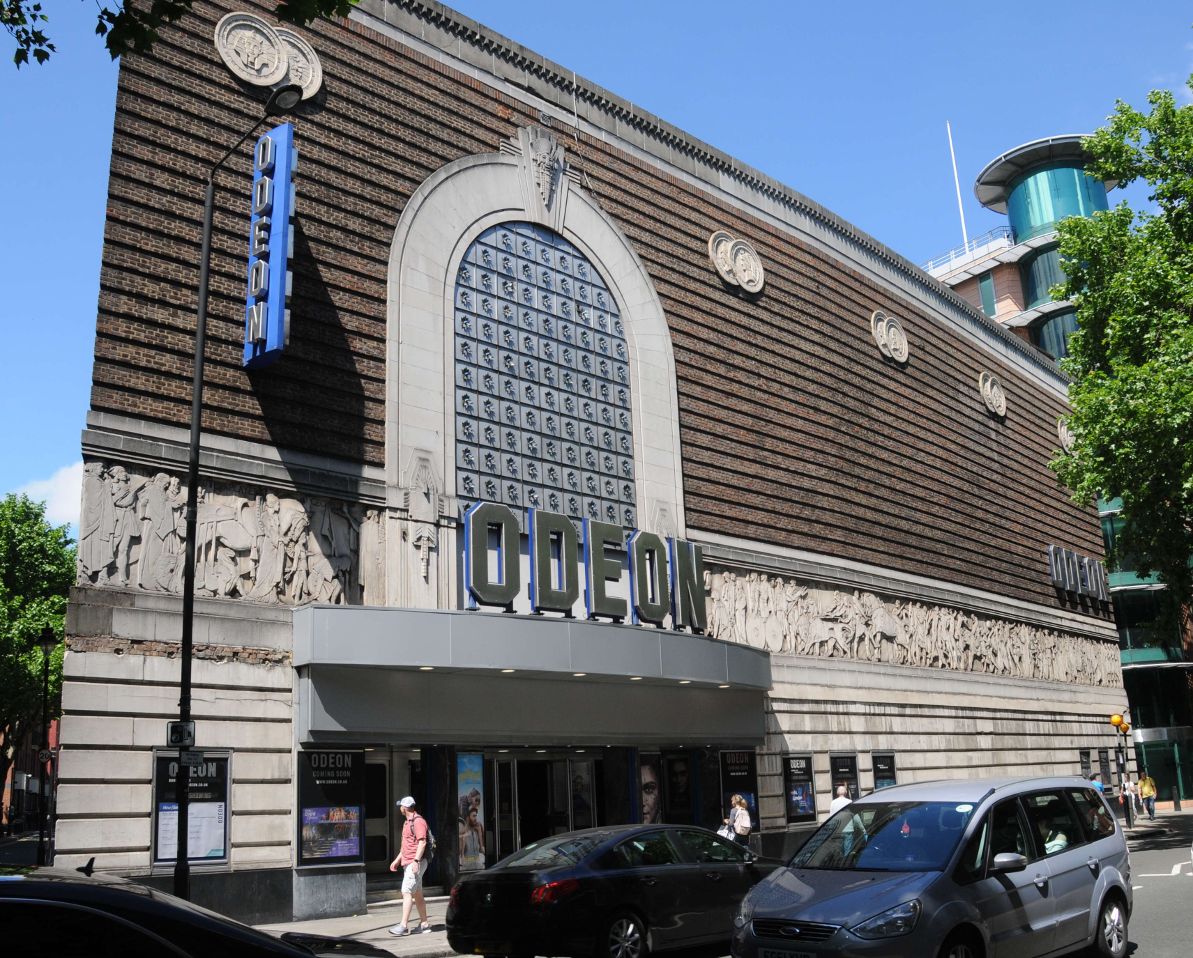 The Beatles entire world tour of 1964 included the song in their ten-song set list. This tour spanned from June 4th to November 10th, 1964 and covered Denmark, Scotland, Australia, Hong Kong, New Zealand, America, Canada and Sweden and ended back in Britain. They continued playing the song during their "Another Beatles Christmas Show" which stretched from December 24th through January 16th, 1965 at the Odeon Cinema in London. The Beatles entire world tour of 1964 included the song in their ten-song set list. This tour spanned from June 4th to November 10th, 1964 and covered Denmark, Scotland, Australia, Hong Kong, New Zealand, America, Canada and Sweden and ended back in Britain. They continued playing the song during their "Another Beatles Christmas Show" which stretched from December 24th through January 16th, 1965 at the Odeon Cinema in London.
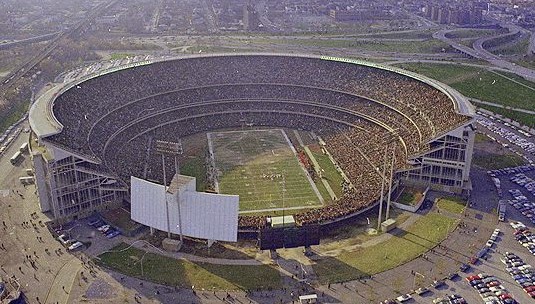 Because of the immense popularity of the song, and also, undoubtedly, because of it being quite easy to perform and sing, they continued to include the song in both their European and American tours of the year 1965. Highlights from these tours include their beginning date in Paris on June 20th, their groundbreaking New York Shea Stadium performance on August 15th, their Hollywood Bowl performances on August 29th and 30th, and their final performance of the tour at the Cow Palace in San Francisco on August 31st. This appears to be the last time the Beatles performed "Can't Buy Me Love." Because of the immense popularity of the song, and also, undoubtedly, because of it being quite easy to perform and sing, they continued to include the song in both their European and American tours of the year 1965. Highlights from these tours include their beginning date in Paris on June 20th, their groundbreaking New York Shea Stadium performance on August 15th, their Hollywood Bowl performances on August 29th and 30th, and their final performance of the tour at the Cow Palace in San Francisco on August 31st. This appears to be the last time the Beatles performed "Can't Buy Me Love."
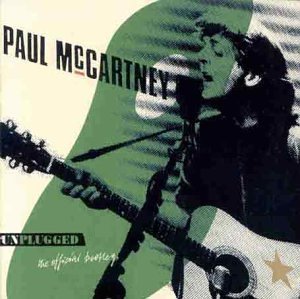 McCartney has also taken advantage of the popularity of "Can't Buy Me Love" by including the song in many of his solo tours. First of all, the song was included in Paul's "World Tour," which spanned from September 26th, 1989 to July 29th, 1990. A semi-acoustic rendition of the song was in the set list of his "Unplugged" tour of 1991, which stretched from May 8th to July 24th of that year. His 1993 "New World" tour featured the song as well, this running from February 18th to December 16th of that year. McCartney has also taken advantage of the popularity of "Can't Buy Me Love" by including the song in many of his solo tours. First of all, the song was included in Paul's "World Tour," which spanned from September 26th, 1989 to July 29th, 1990. A semi-acoustic rendition of the song was in the set list of his "Unplugged" tour of 1991, which stretched from May 8th to July 24th of that year. His 1993 "New World" tour featured the song as well, this running from February 18th to December 16th of that year.
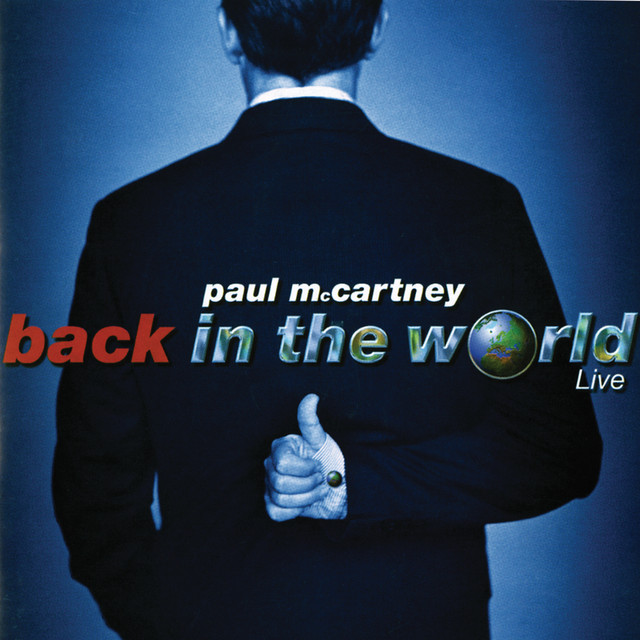 Paul McCartney's "Driving World" tour, which featured dates in Mexico and Japan, included the song as well, this tour spanning from April 1st to November 18th, 2002. The song was next featured during his "Back In The World" tour, which ran from March 25th to June 1st, 2003. He then included "Can't Buy Me Love" as an alternate during some of his 2015 dates during his "Out There" Tour, which ran from May 4th, 2013 to October 27th, 2015. He also brought it to the stage on his "One On One" tour which ran from April 13th, 2016 to September 16th, 2017, as well as on many of the dates of his "Freshen Up" tour that began on September 17th, 2018 and concluded on July 13th, 2019. It was then sometimes used as the opening song during his "Got Back" tour, which ran from April 28th, 2022 to December 19th, 2024. Paul McCartney's "Driving World" tour, which featured dates in Mexico and Japan, included the song as well, this tour spanning from April 1st to November 18th, 2002. The song was next featured during his "Back In The World" tour, which ran from March 25th to June 1st, 2003. He then included "Can't Buy Me Love" as an alternate during some of his 2015 dates during his "Out There" Tour, which ran from May 4th, 2013 to October 27th, 2015. He also brought it to the stage on his "One On One" tour which ran from April 13th, 2016 to September 16th, 2017, as well as on many of the dates of his "Freshen Up" tour that began on September 17th, 2018 and concluded on July 13th, 2019. It was then sometimes used as the opening song during his "Got Back" tour, which ran from April 28th, 2022 to December 19th, 2024.
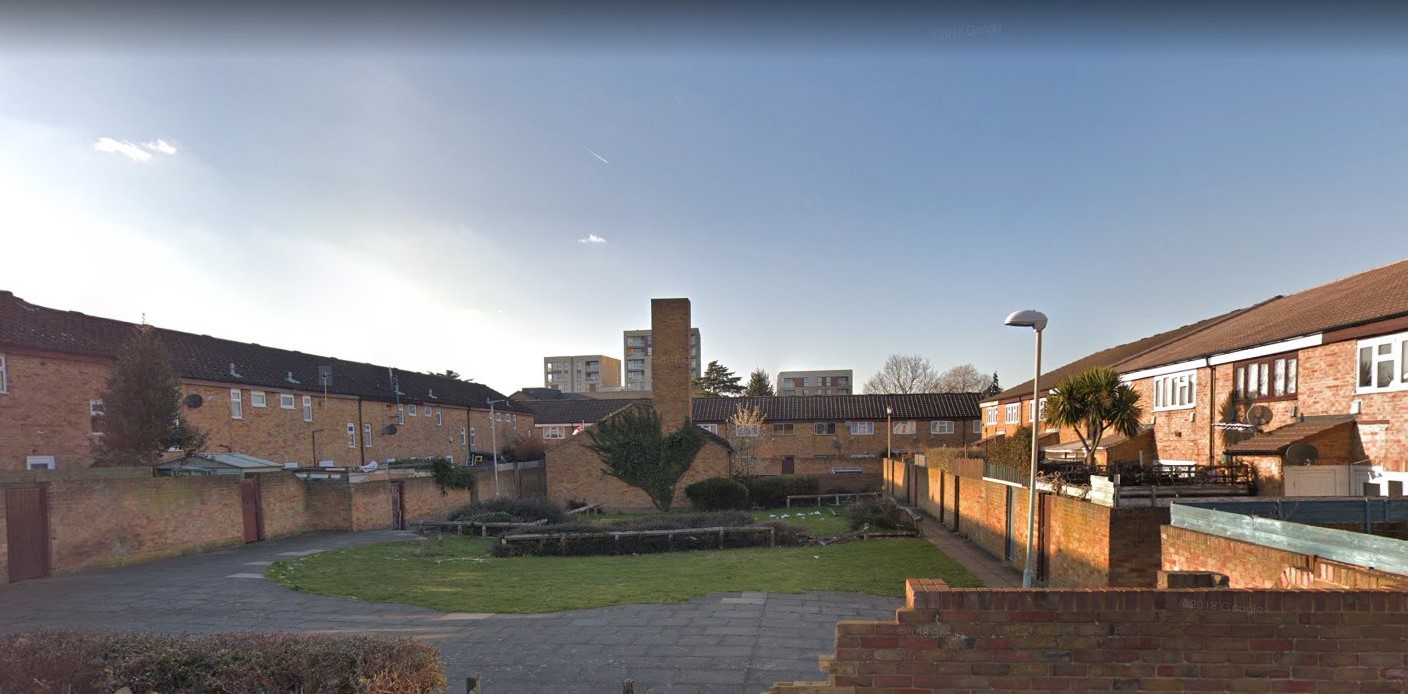
Thornbury Playing Fields utilized for the "breakout" scene in the film "A Hard Day's Night"
Conclusion
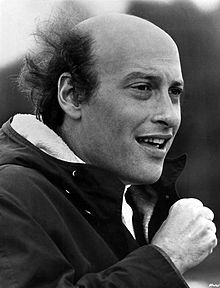 Director Richard Lester was well aware of the impact that "Can't Buy Me Love" would have in their first motion picture. "I composed ("I'll Cry Instead") for 'A Hard Day's Night'", said Lennon in 1980, "but Dick Lester didn't even want it. He resurrected 'Can't Buy Me Love' for that sequence instead." The "breakout" sequence in the film, which included the group romping around on a helicopter pad and then at Thornbury Playing Fields, could only be truly effective with their latest international hit "Can't Buy Me Love" playing as a backdrop. Director Richard Lester was well aware of the impact that "Can't Buy Me Love" would have in their first motion picture. "I composed ("I'll Cry Instead") for 'A Hard Day's Night'", said Lennon in 1980, "but Dick Lester didn't even want it. He resurrected 'Can't Buy Me Love' for that sequence instead." The "breakout" sequence in the film, which included the group romping around on a helicopter pad and then at Thornbury Playing Fields, could only be truly effective with their latest international hit "Can't Buy Me Love" playing as a backdrop.
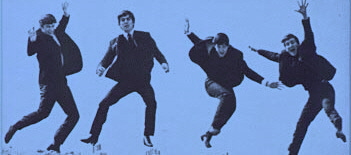 This song had all of the ingredients to make a quick and long-lasting impact with their huge audience. It had a lyrical message that we all could relate to and had an insistent beat that made you tap your foot. It had a vocal melody line that put a smile on your face. It contained the raw excitement throughout that exemplified the persona of the band as a whole. Being one of the most identifiable songs of The Beatles, it's one that endures to this day without sounding like it's from a by-gone era. This song had all of the ingredients to make a quick and long-lasting impact with their huge audience. It had a lyrical message that we all could relate to and had an insistent beat that made you tap your foot. It had a vocal melody line that put a smile on your face. It contained the raw excitement throughout that exemplified the persona of the band as a whole. Being one of the most identifiable songs of The Beatles, it's one that endures to this day without sounding like it's from a by-gone era.
And as a follow-up to their groundbreaking worldwide smash "I Want To Hold Your Hand," The Beatles proved with "Can't Buy Me Love" that they were not just another "flash-in-the-pan." They were here to stay!
Song Summary
"Can't Buy Me Love"
Written by: John Lennon / Paul McCartney
Instrumentation (most likely):
- Paul McCartney - Lead Vocals, Bass Guitar (1963 Hofner 500/1)
- George Harrison - Lead Guitar (1963 Gretsch 6122 Country Gentleman)
- John Lennon - Rhythm Guitar (1962 Gibson J160E)
- Ringo Starr - Drums (1963 Ludwig Downbeat Black Oyster Pearl)
- Norman Smith - Hi-hat (Stereo Mix)
Written and compiled by Dave Rybaczewski
|
IF YOU WOULD LIKE TO MAKE A DONATION TO KEEP THIS WEBSITE UP AND RUNNING, PLEASE CLICK BELOW!
Sign Up Below for our MONTHLY BEATLES TRIVIA QUIZ!
|